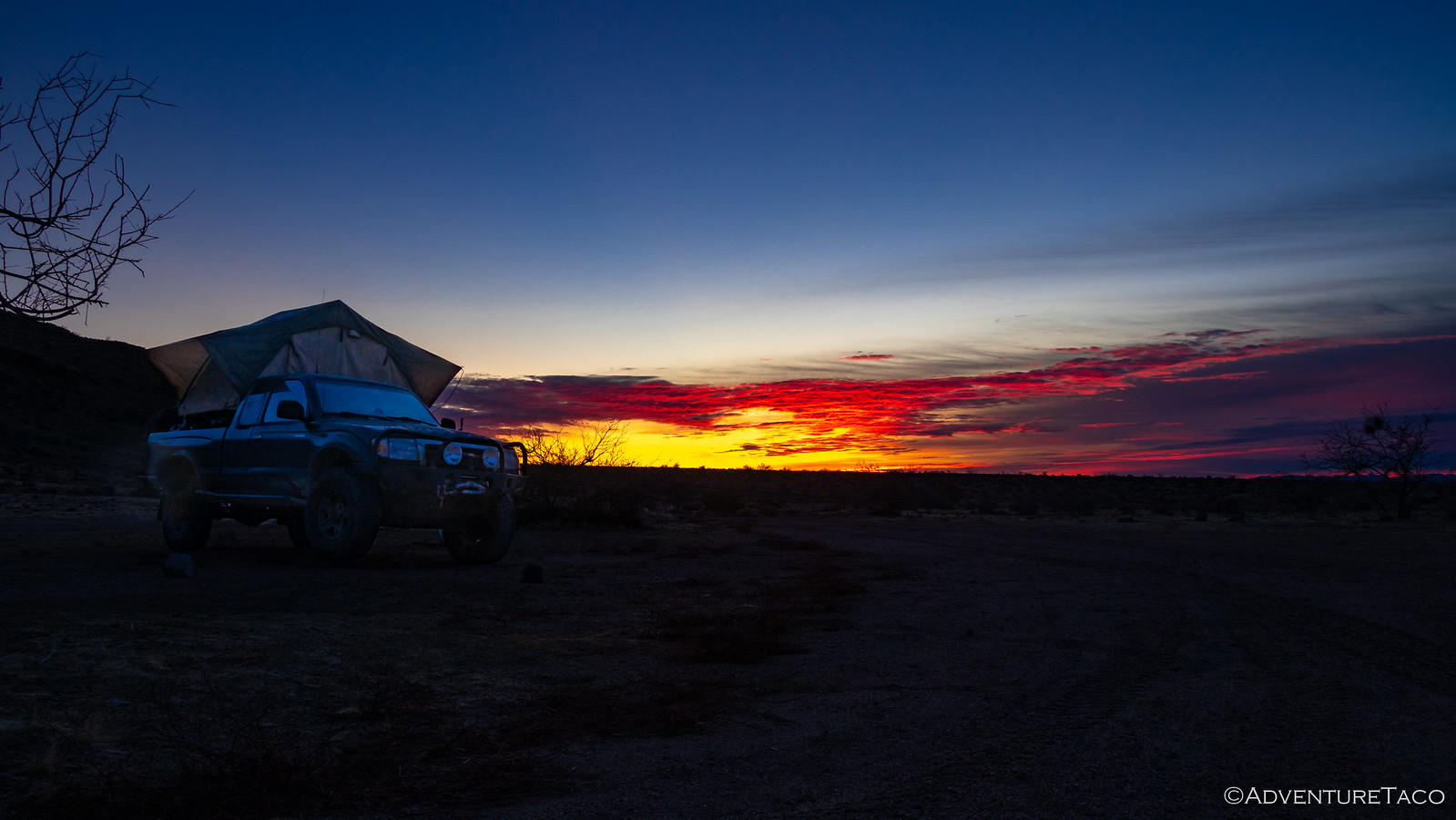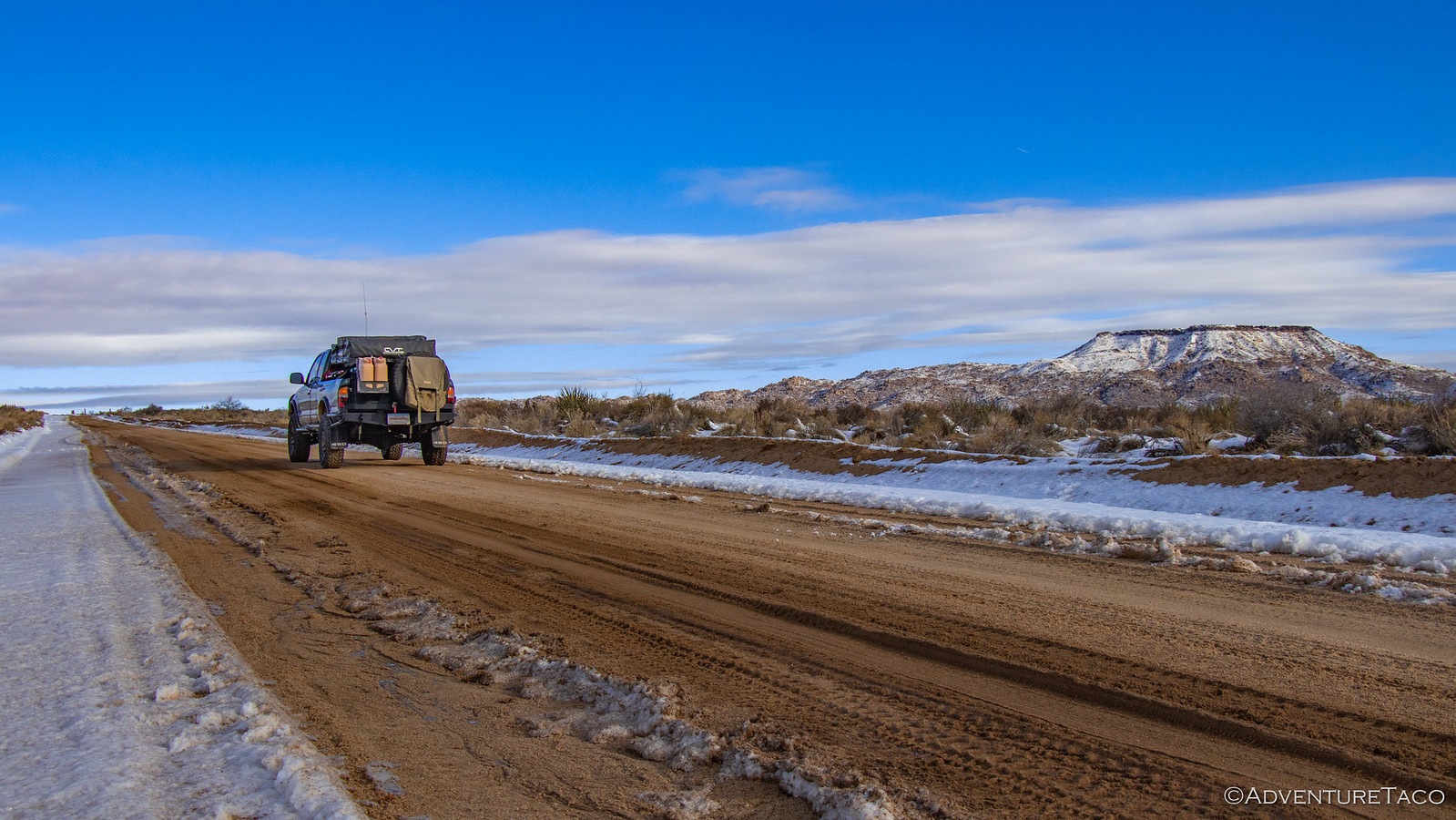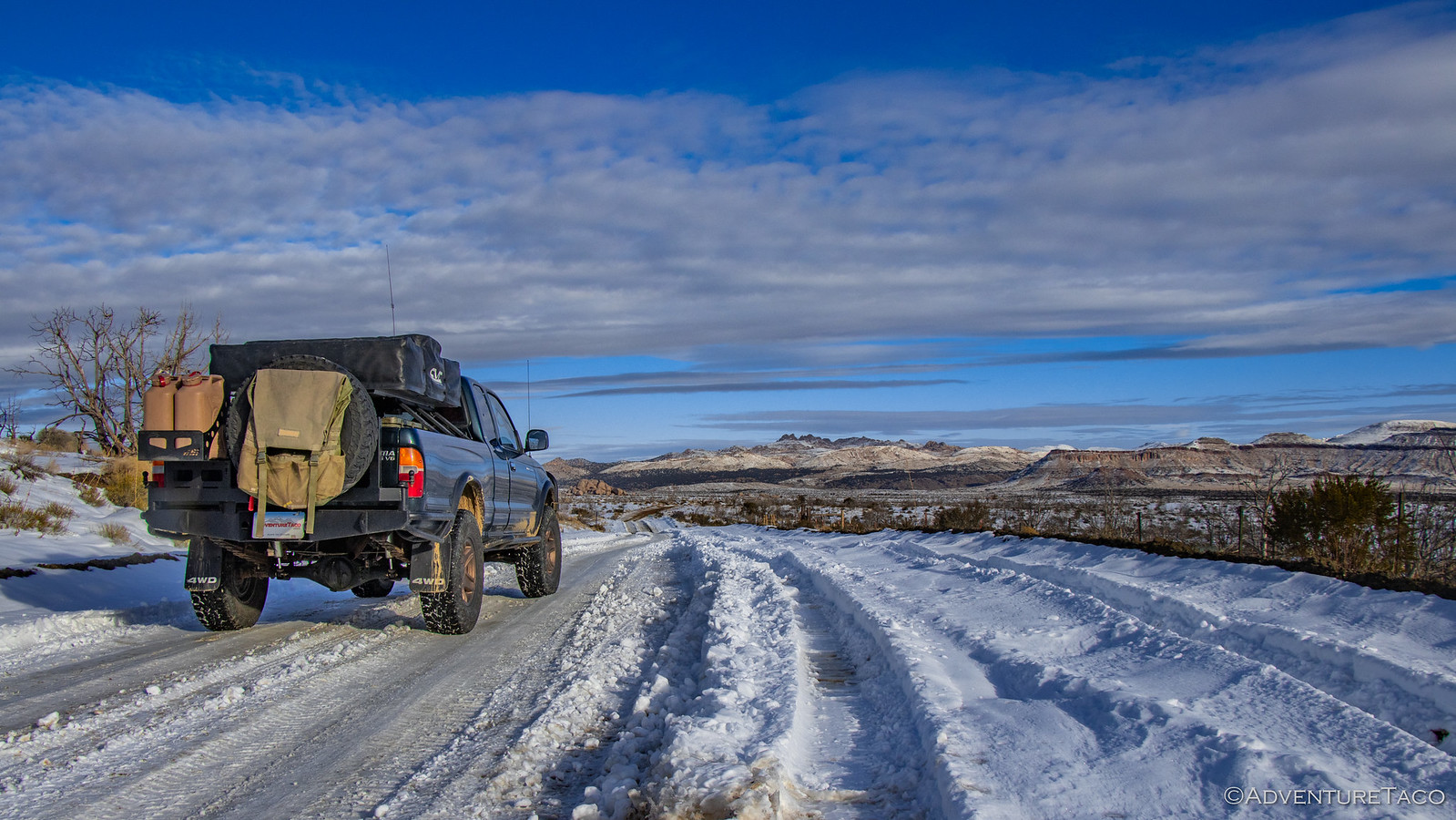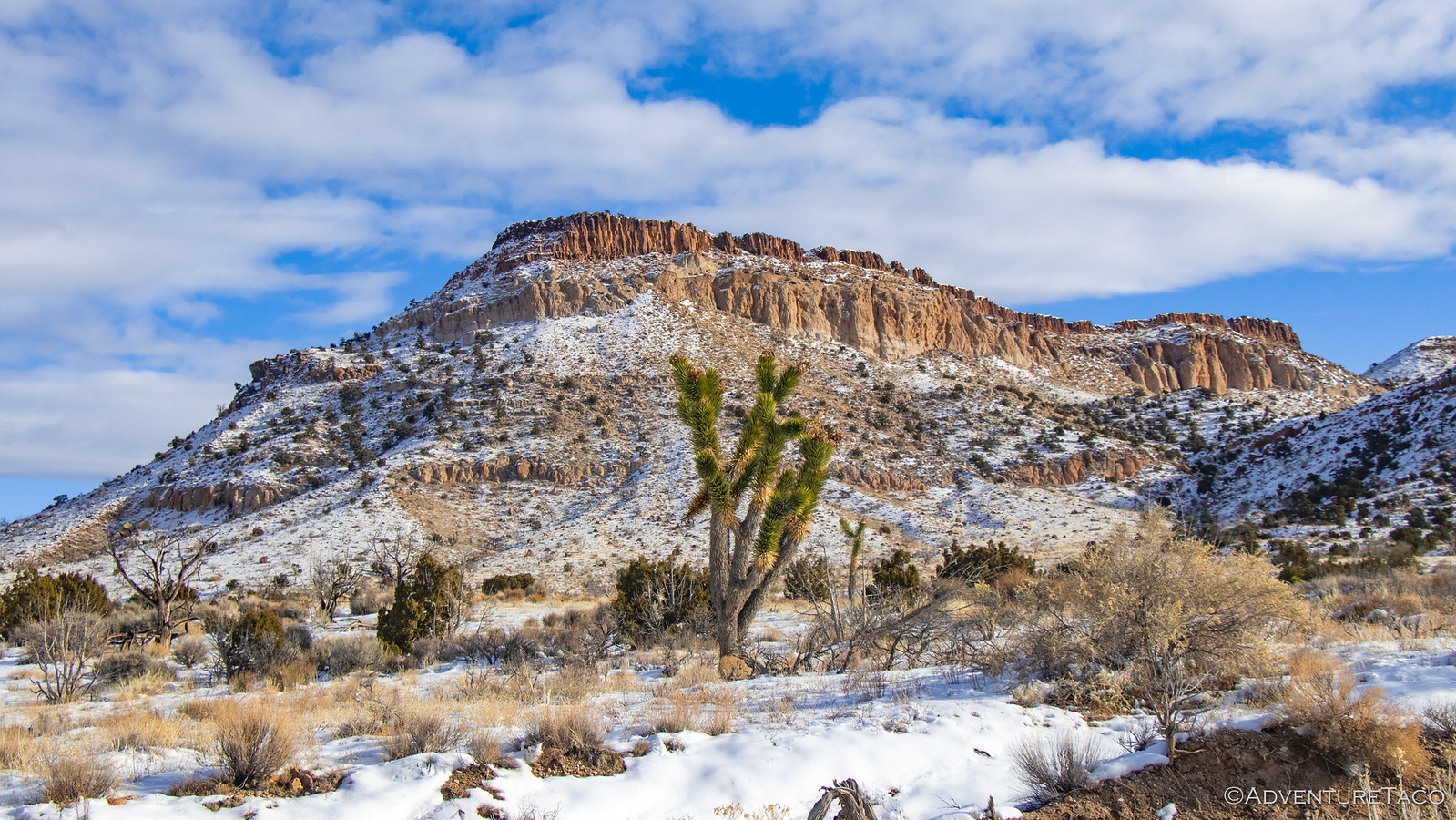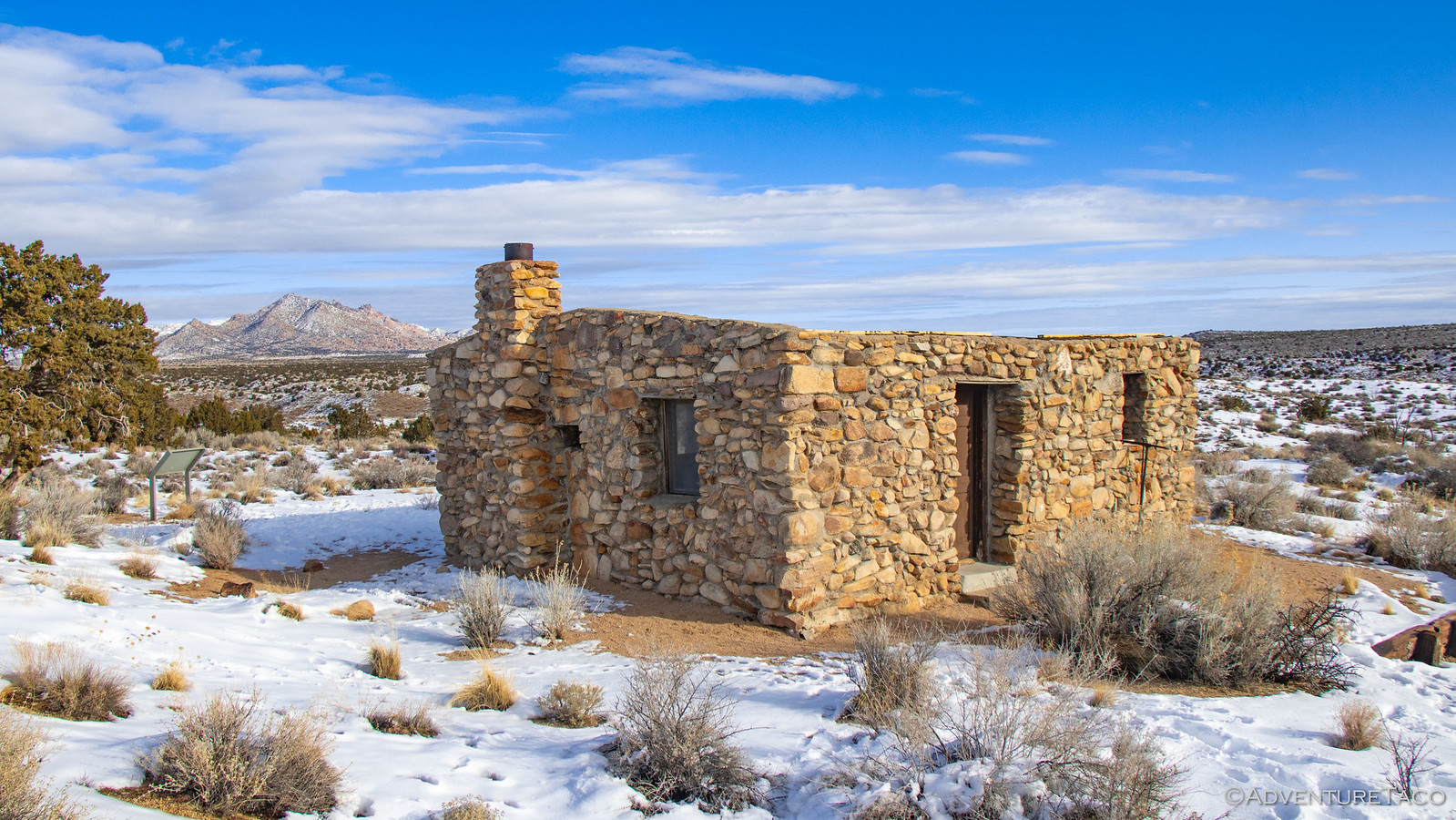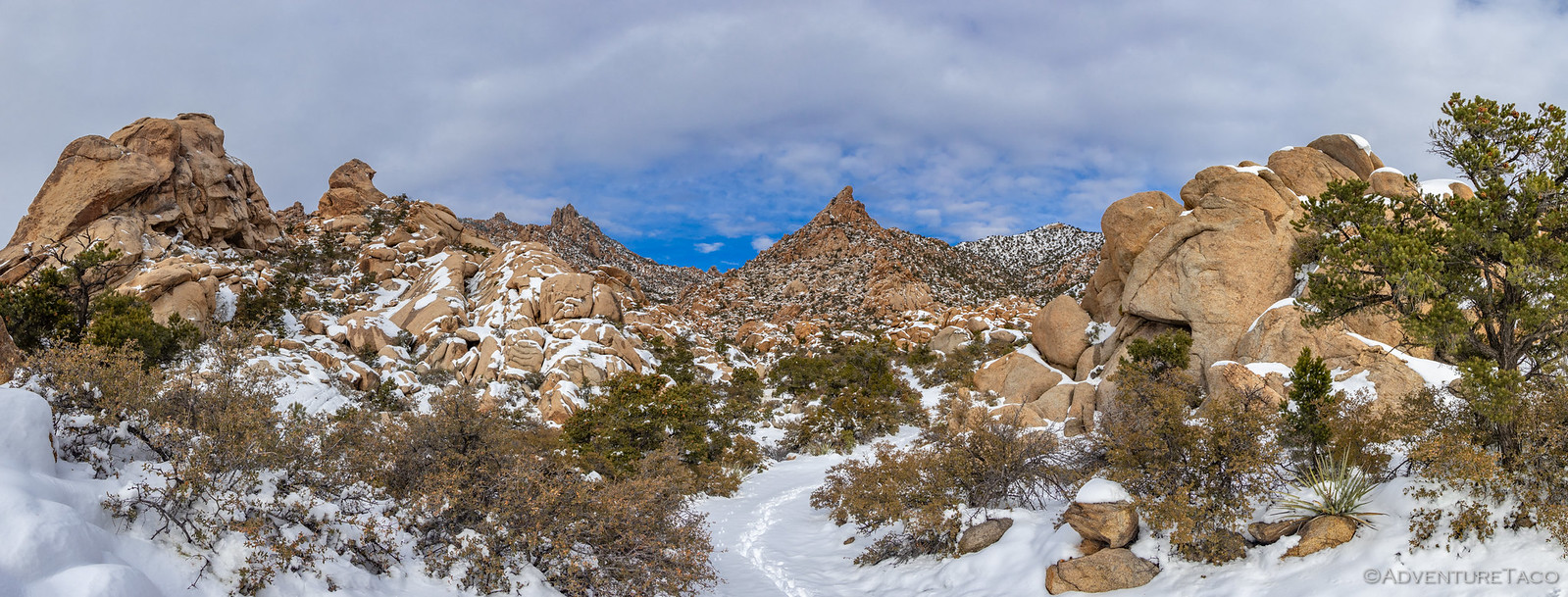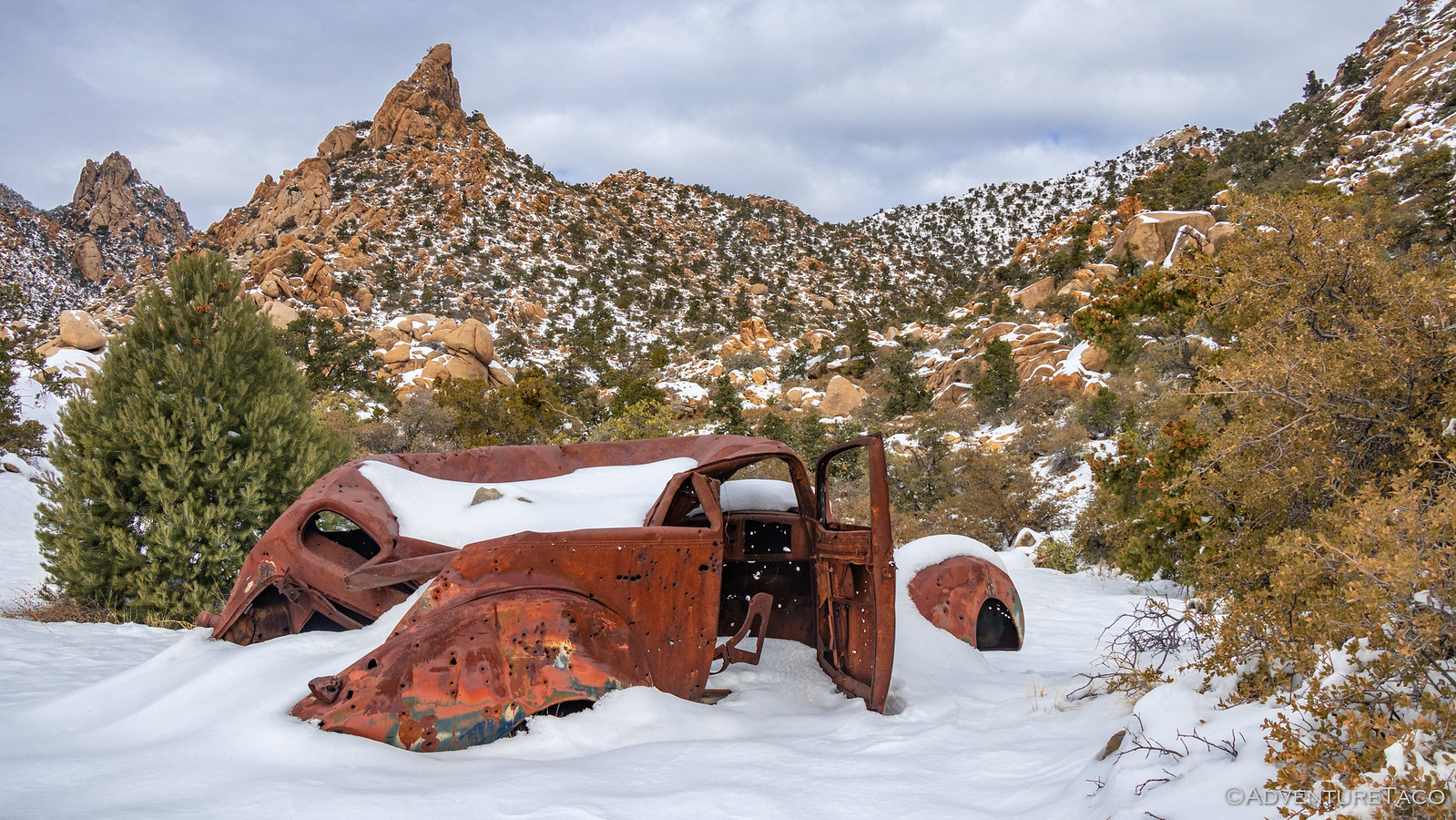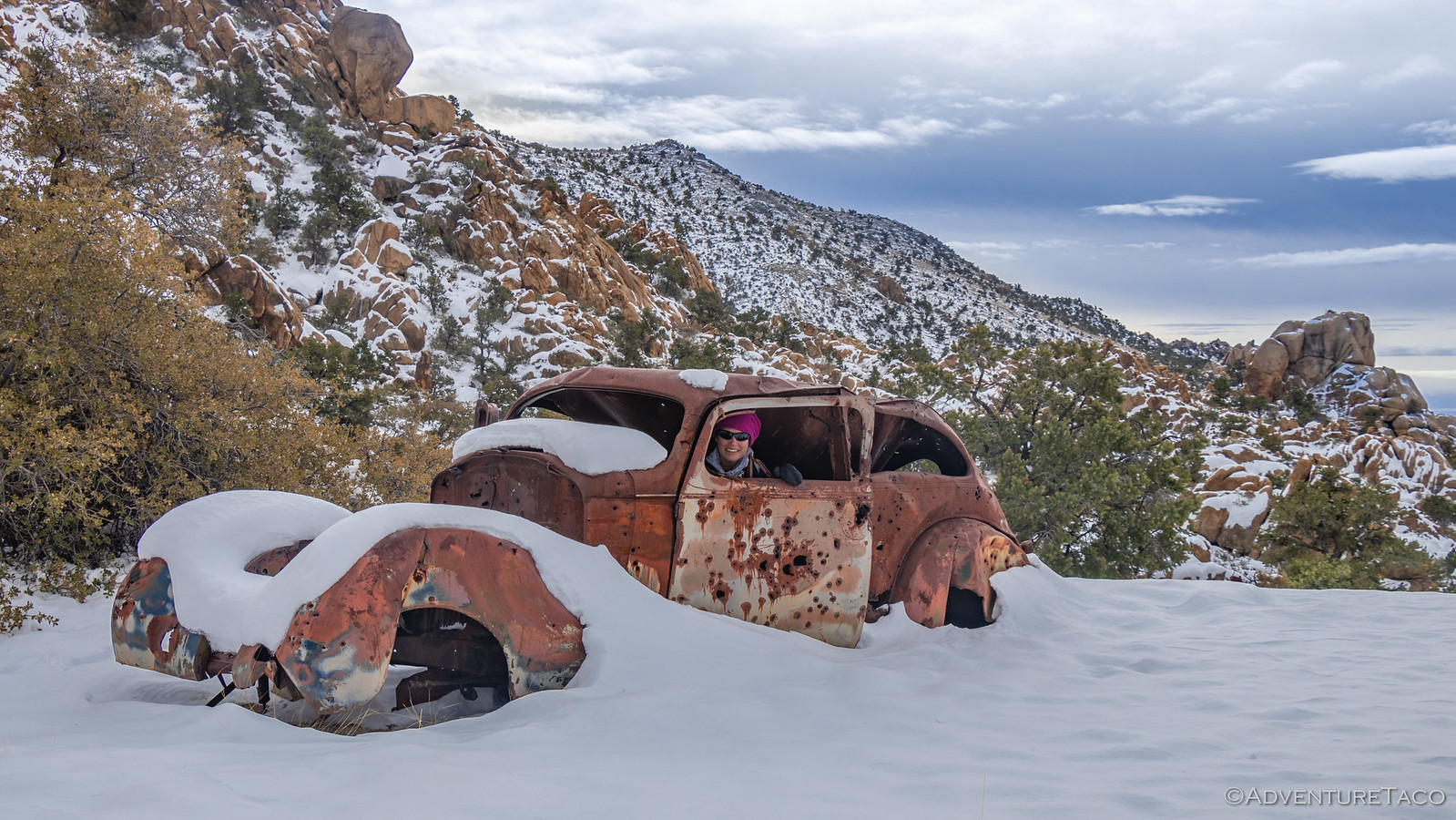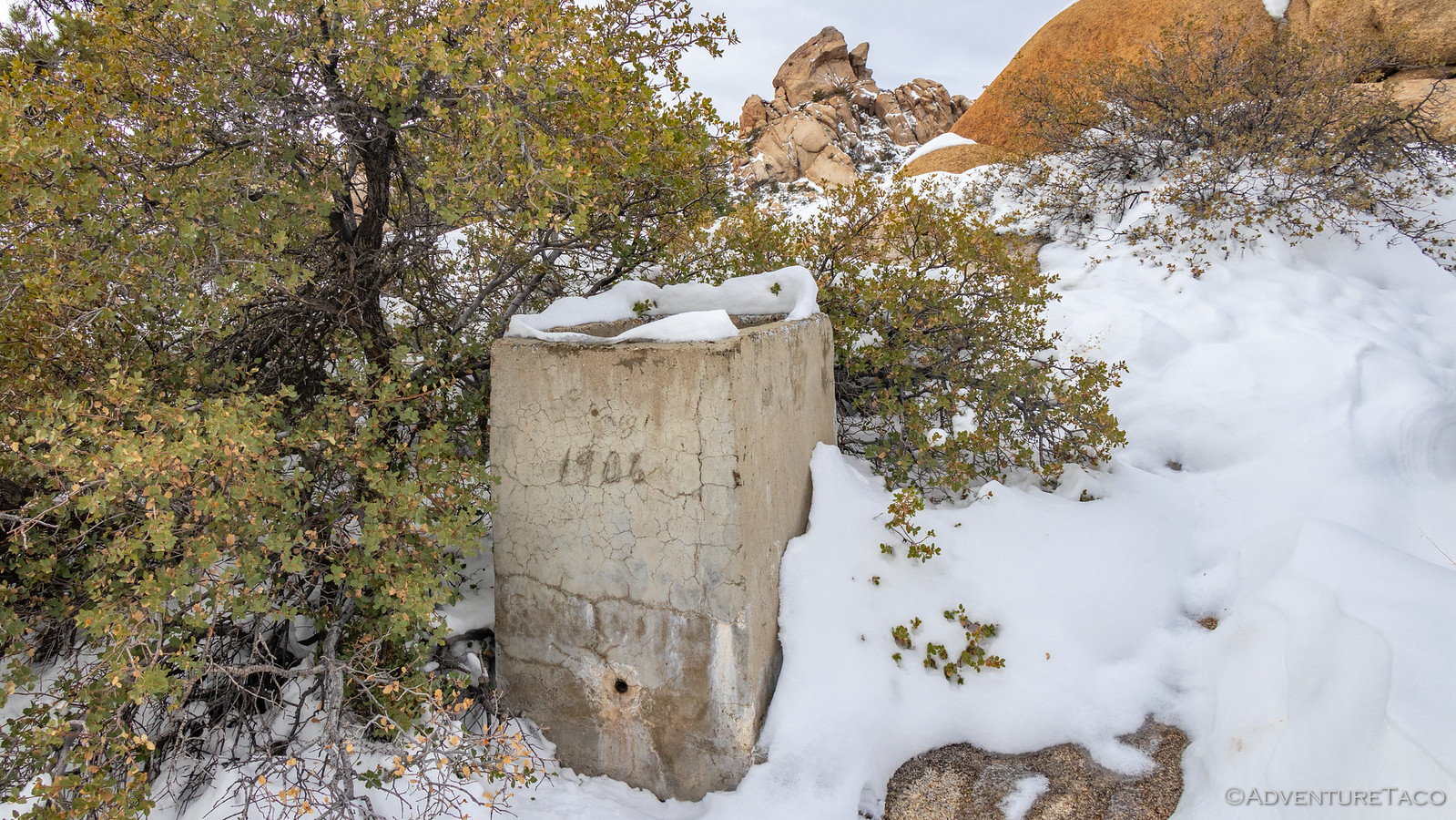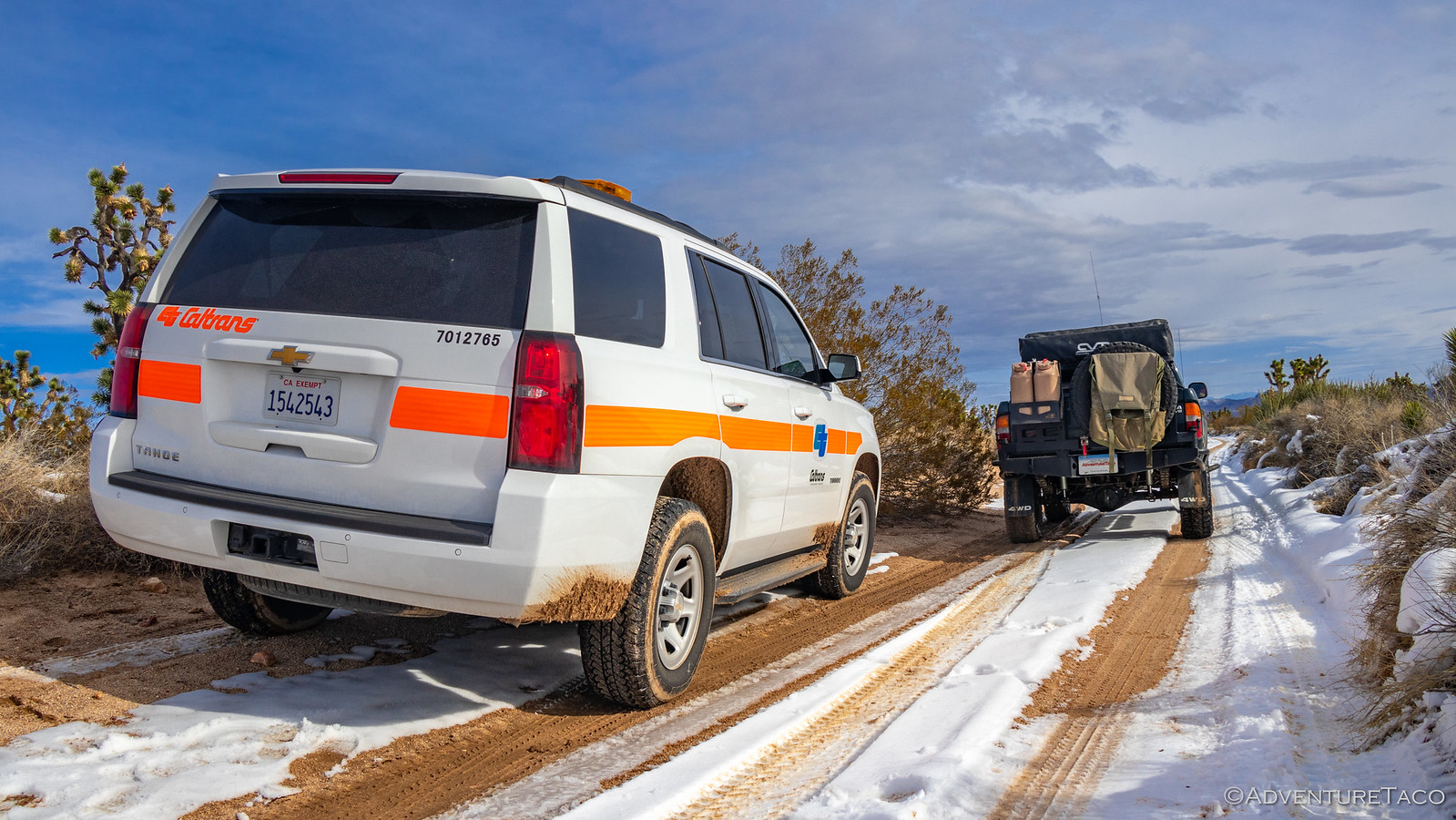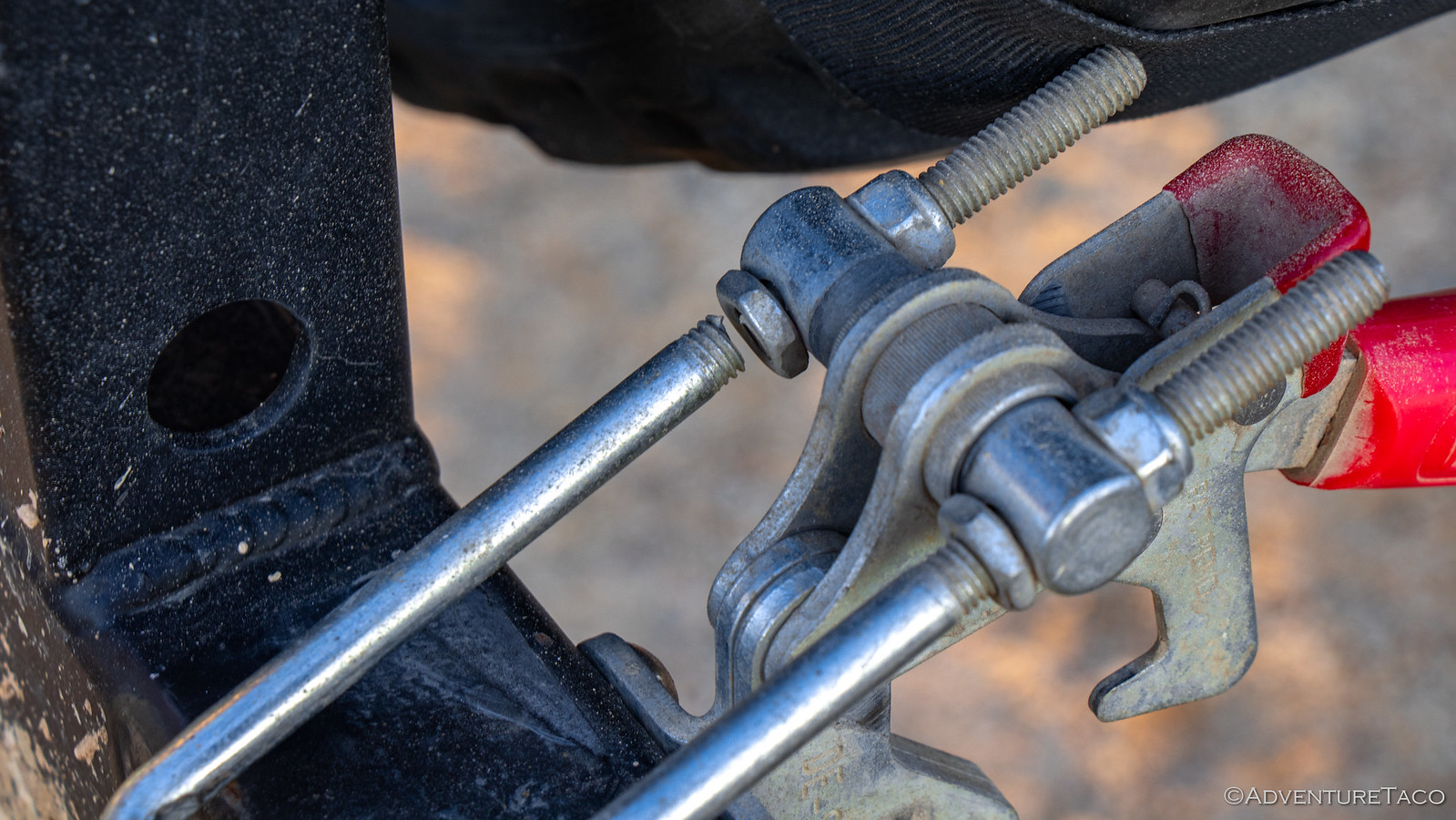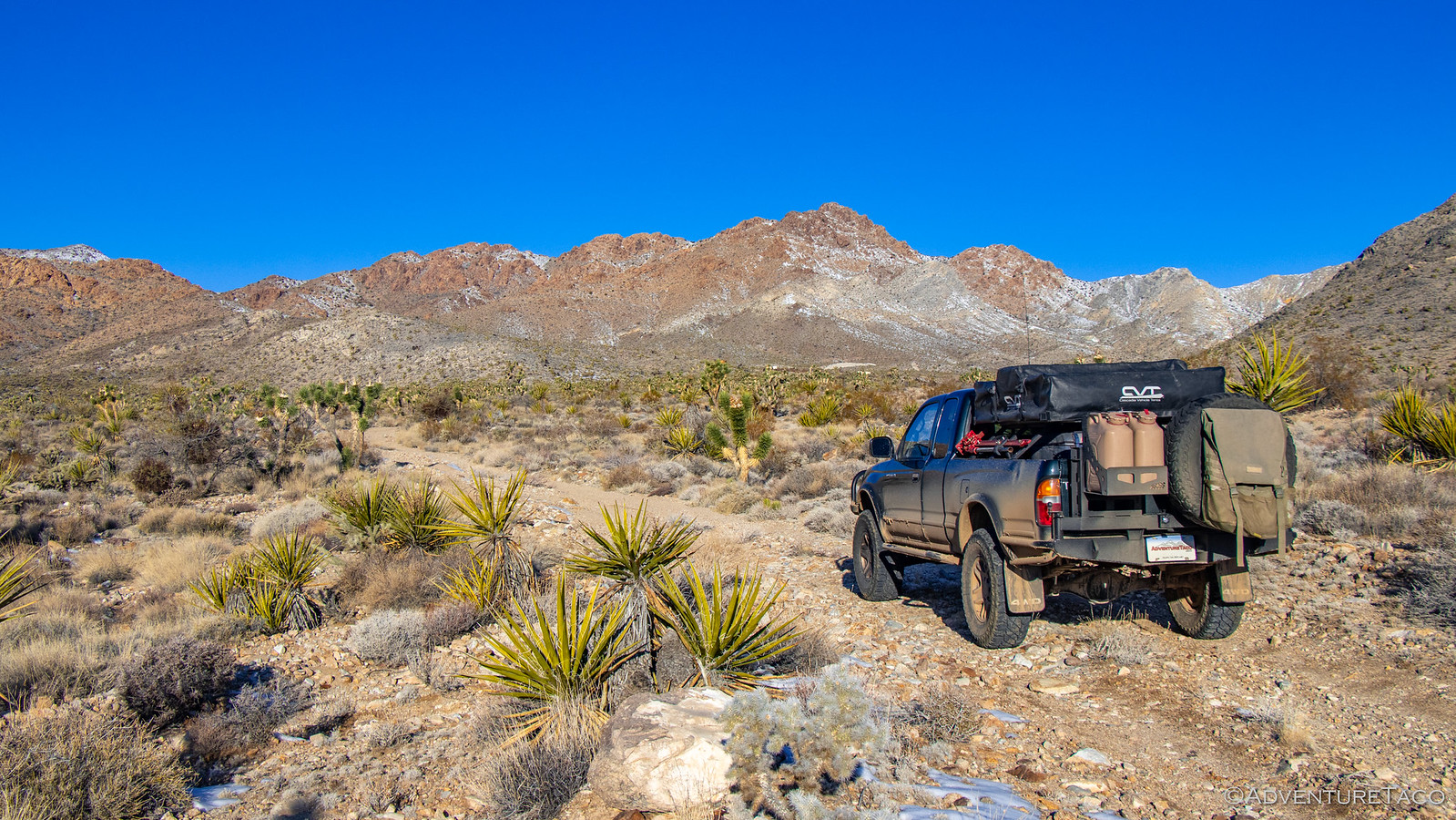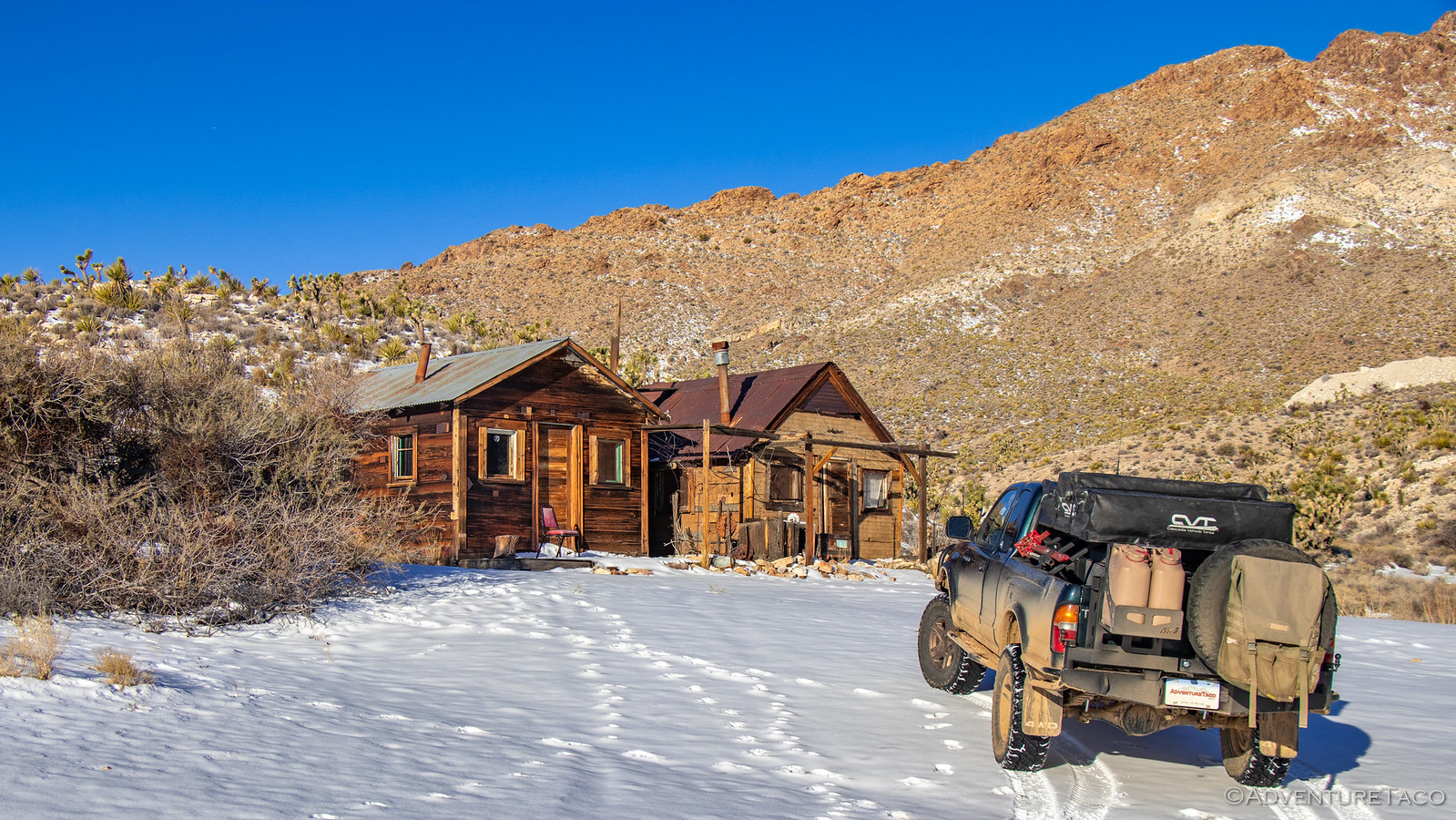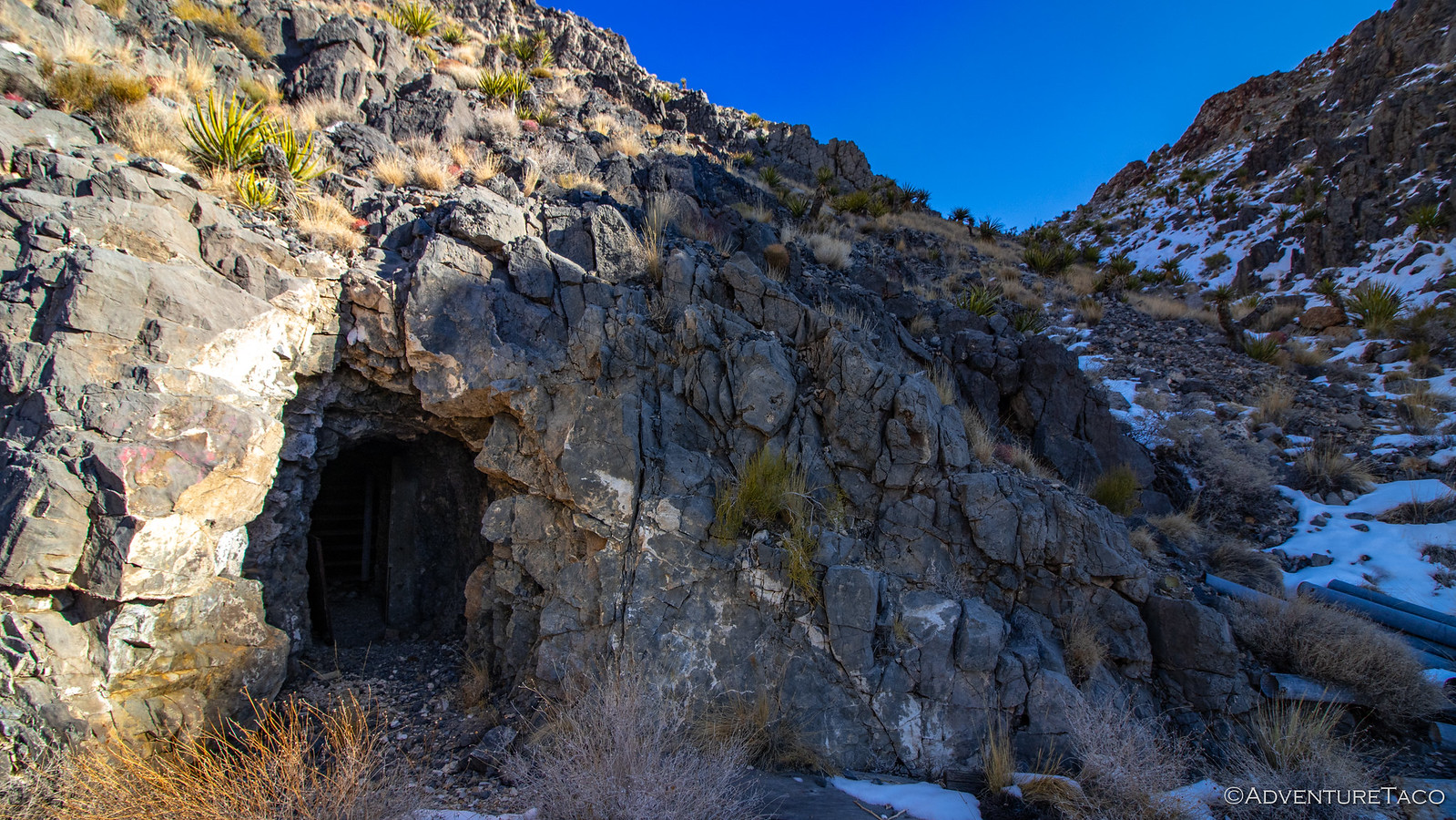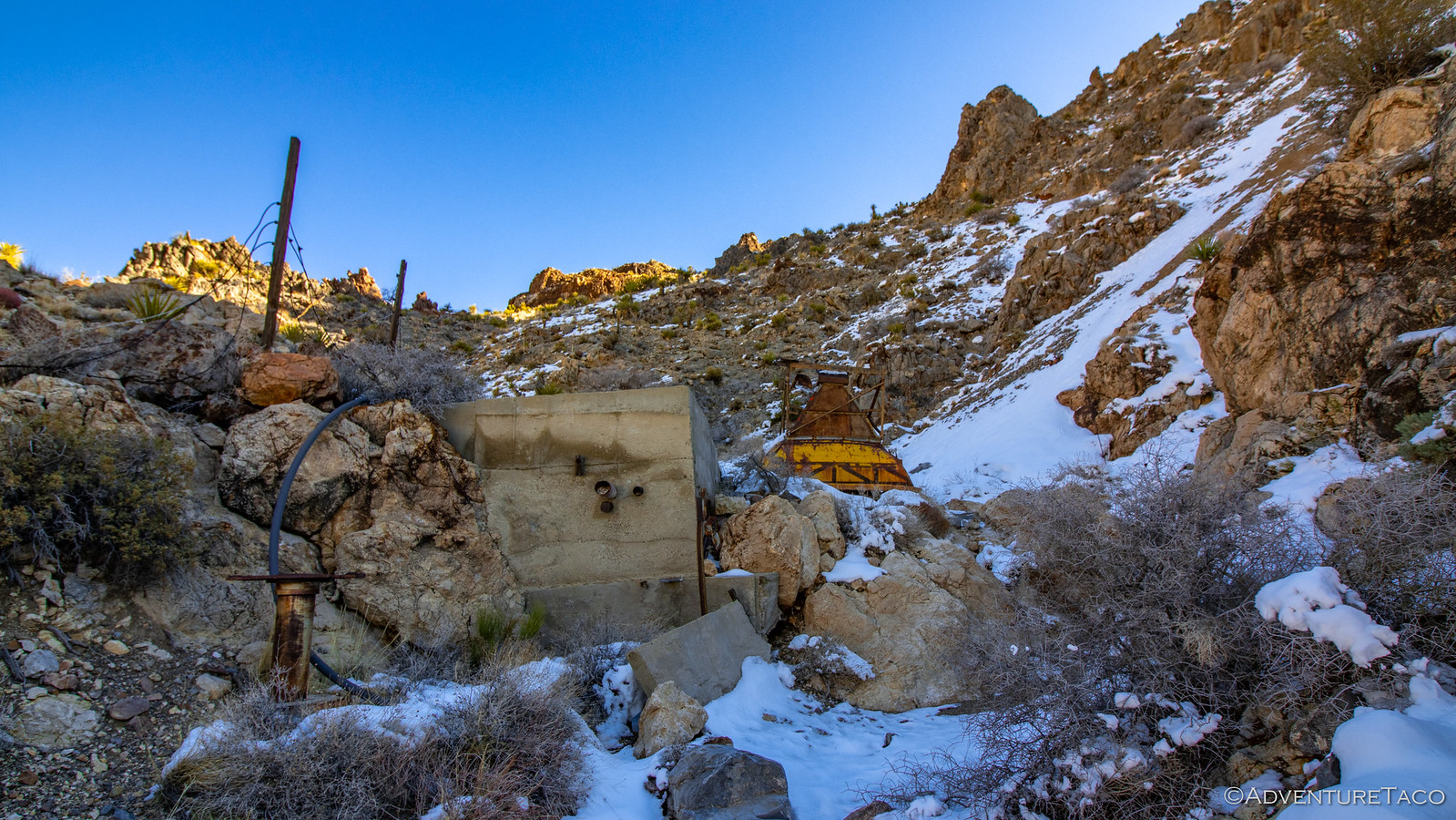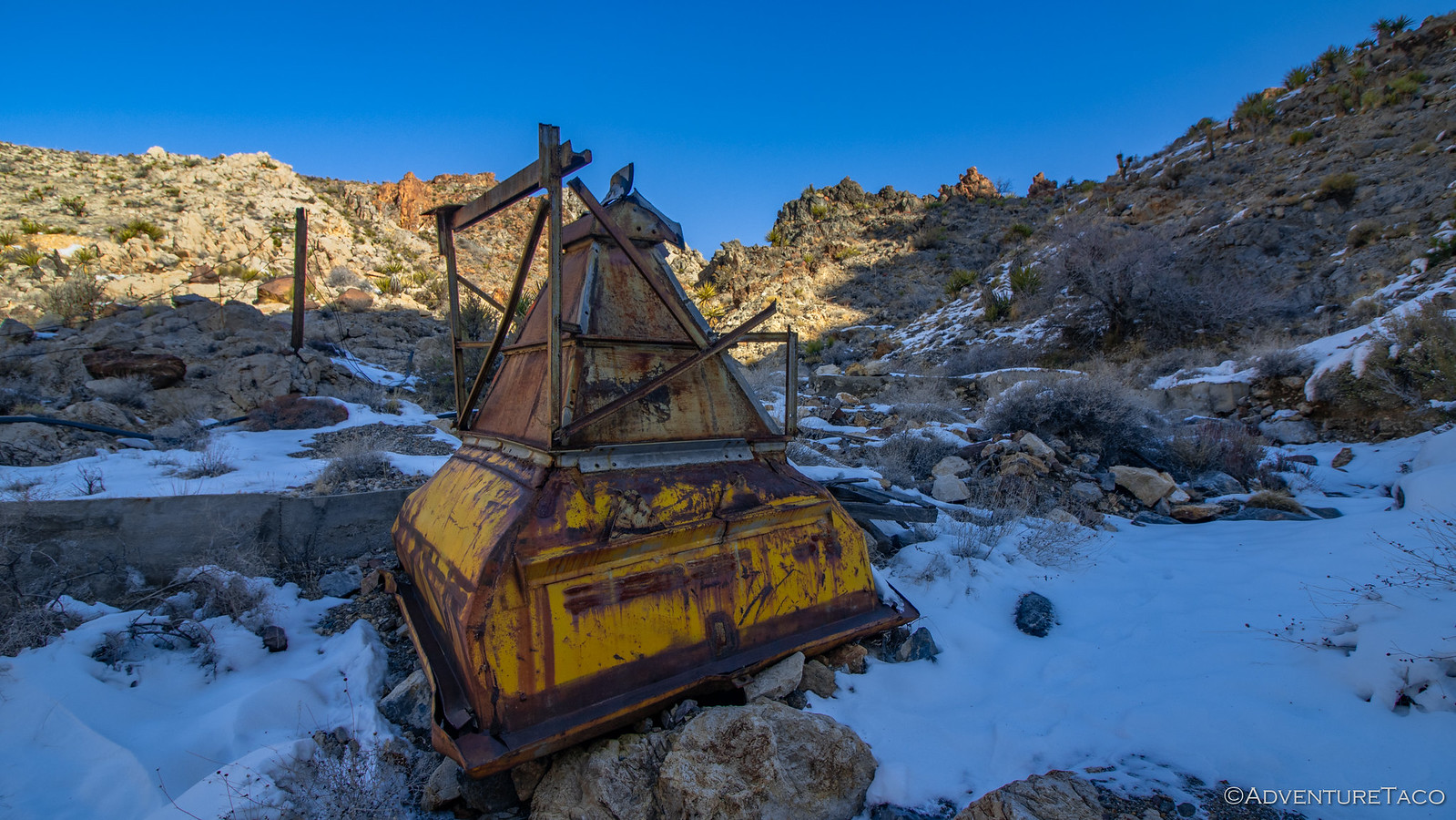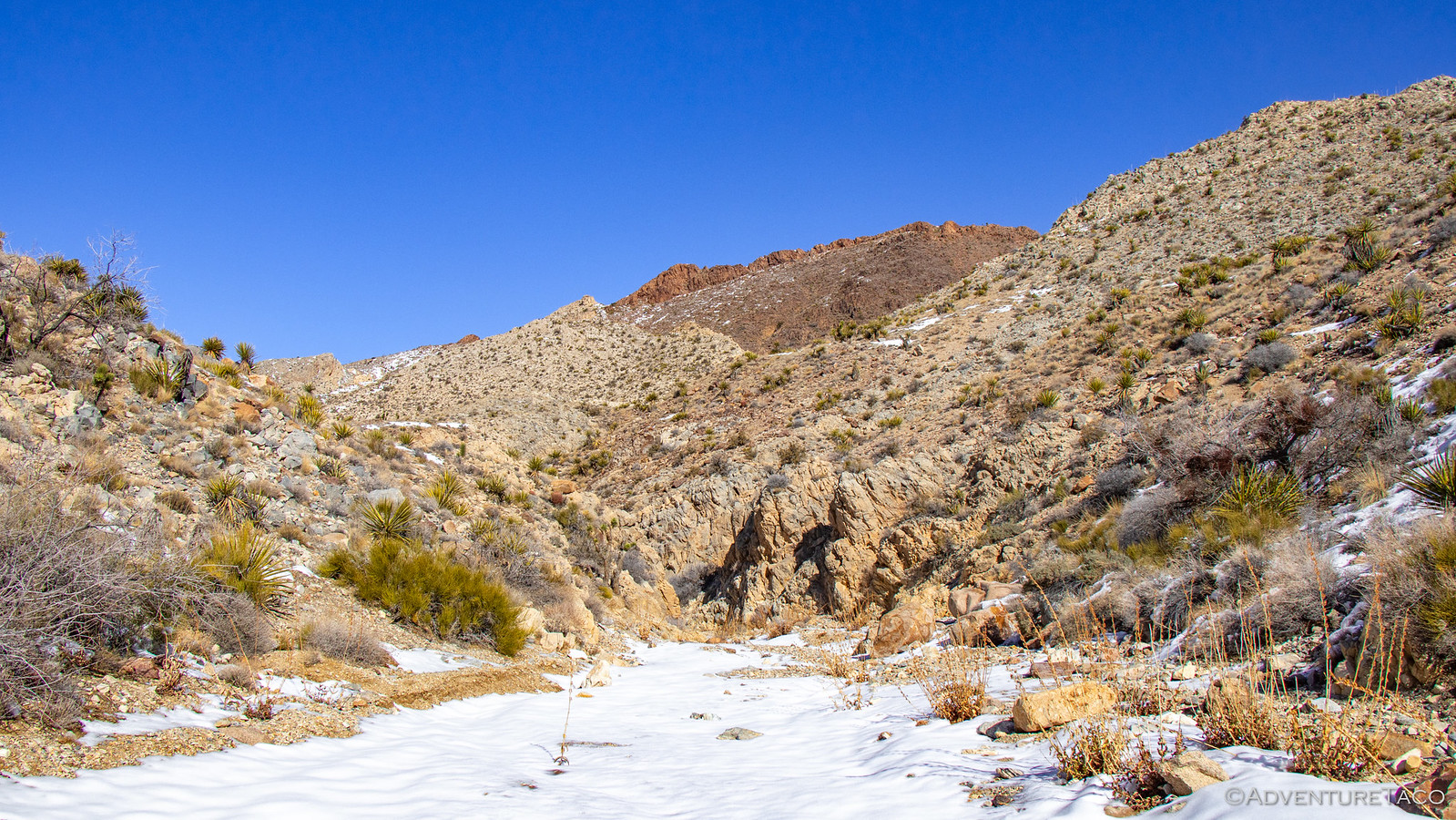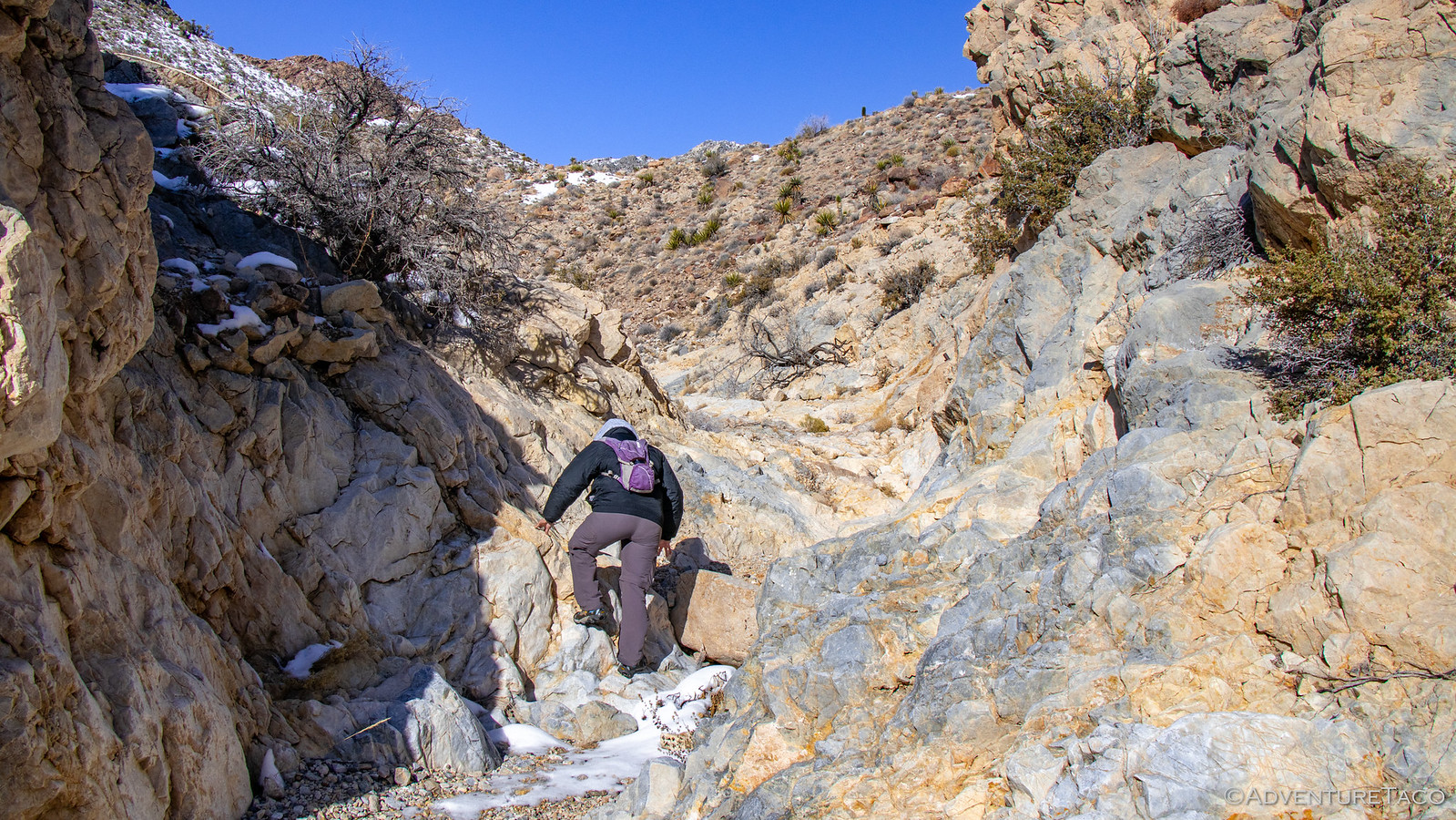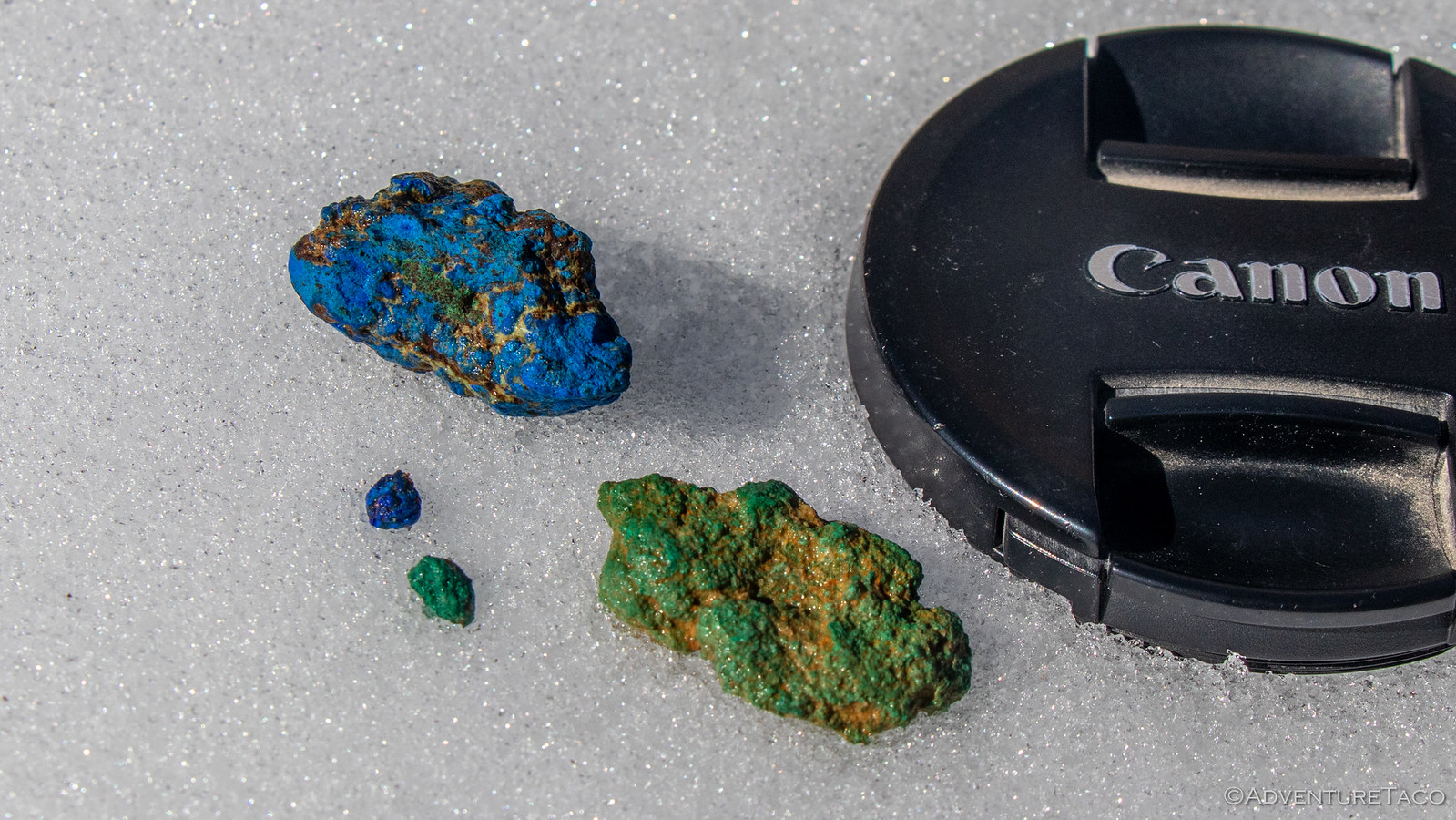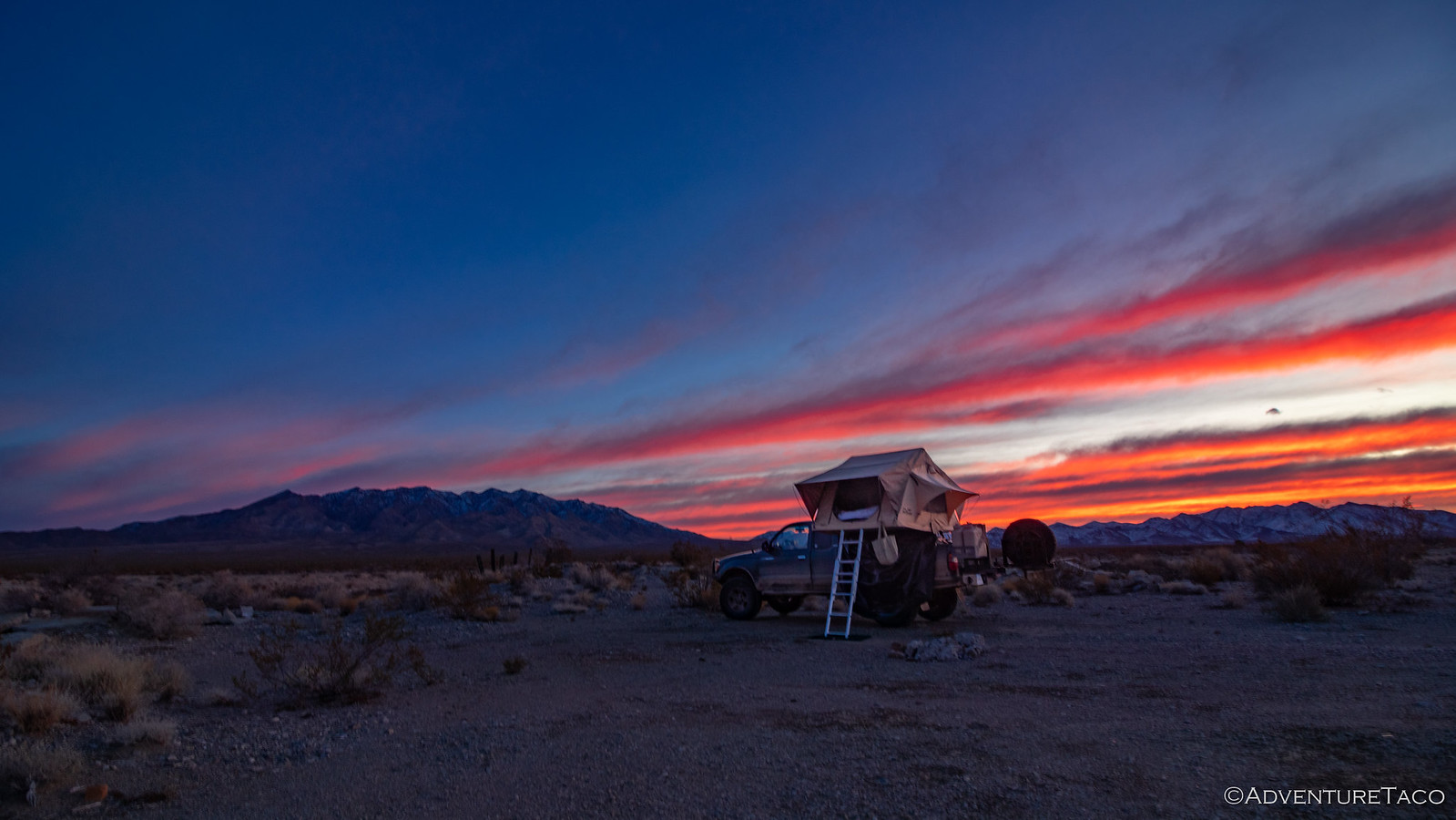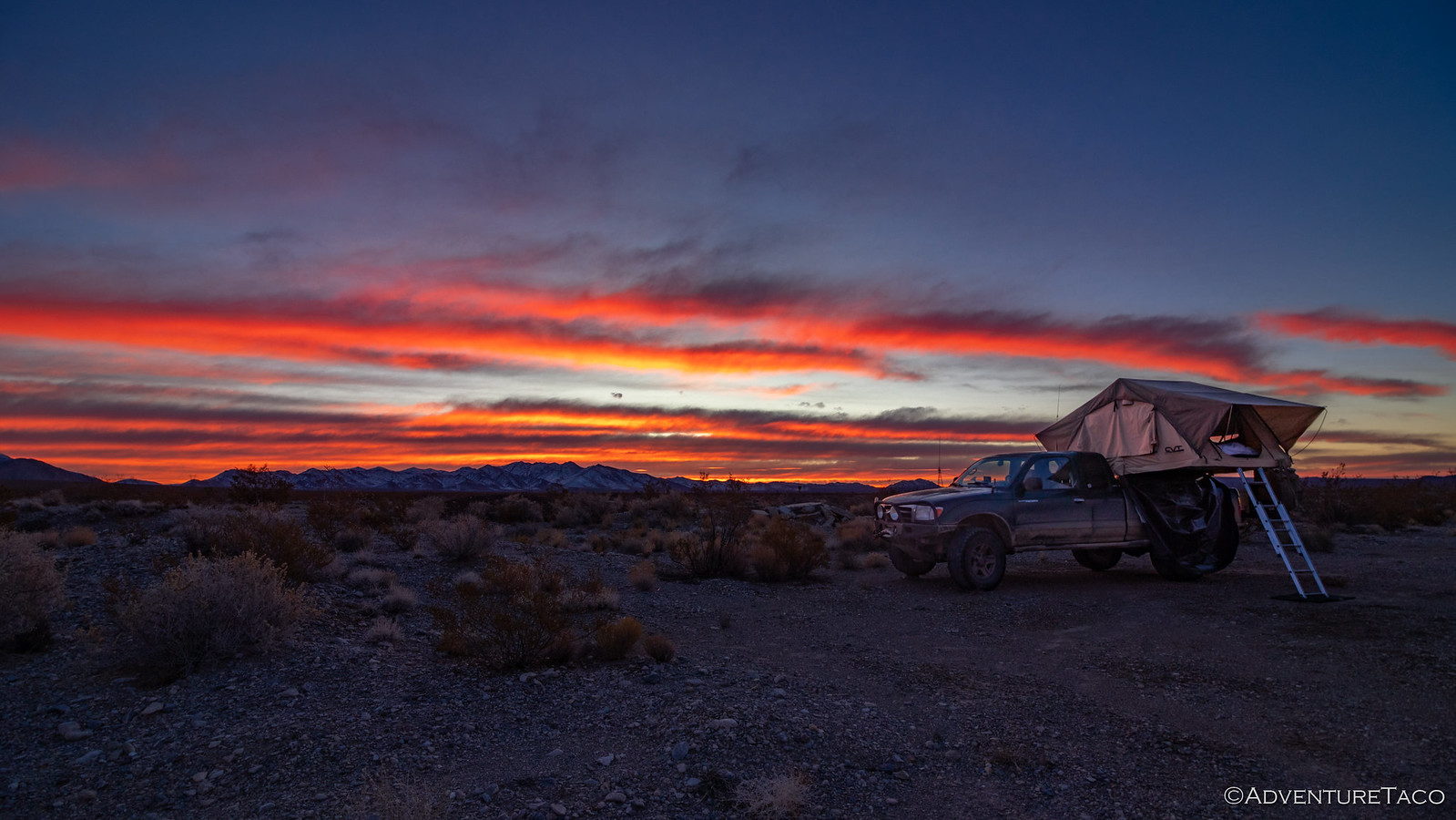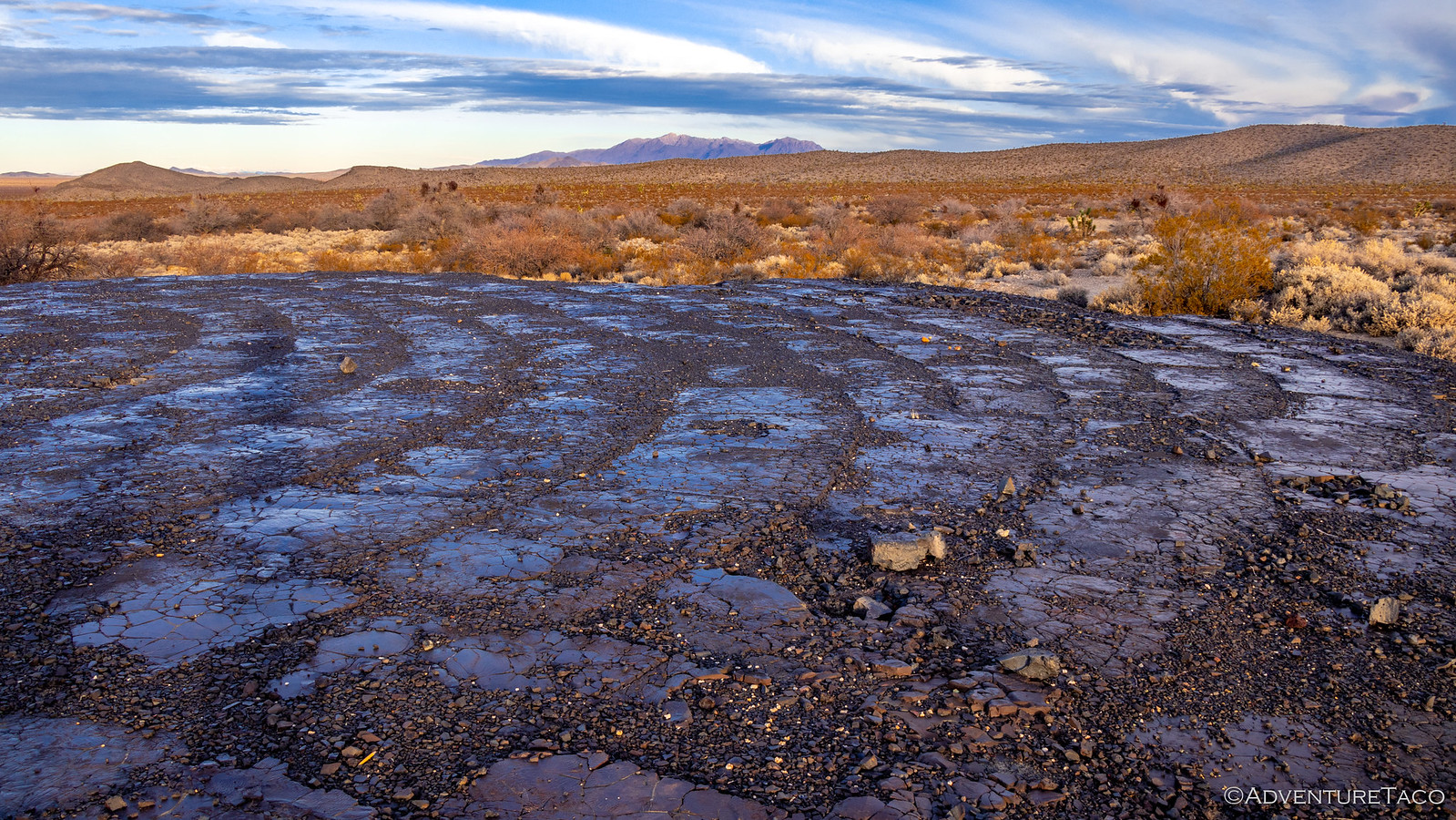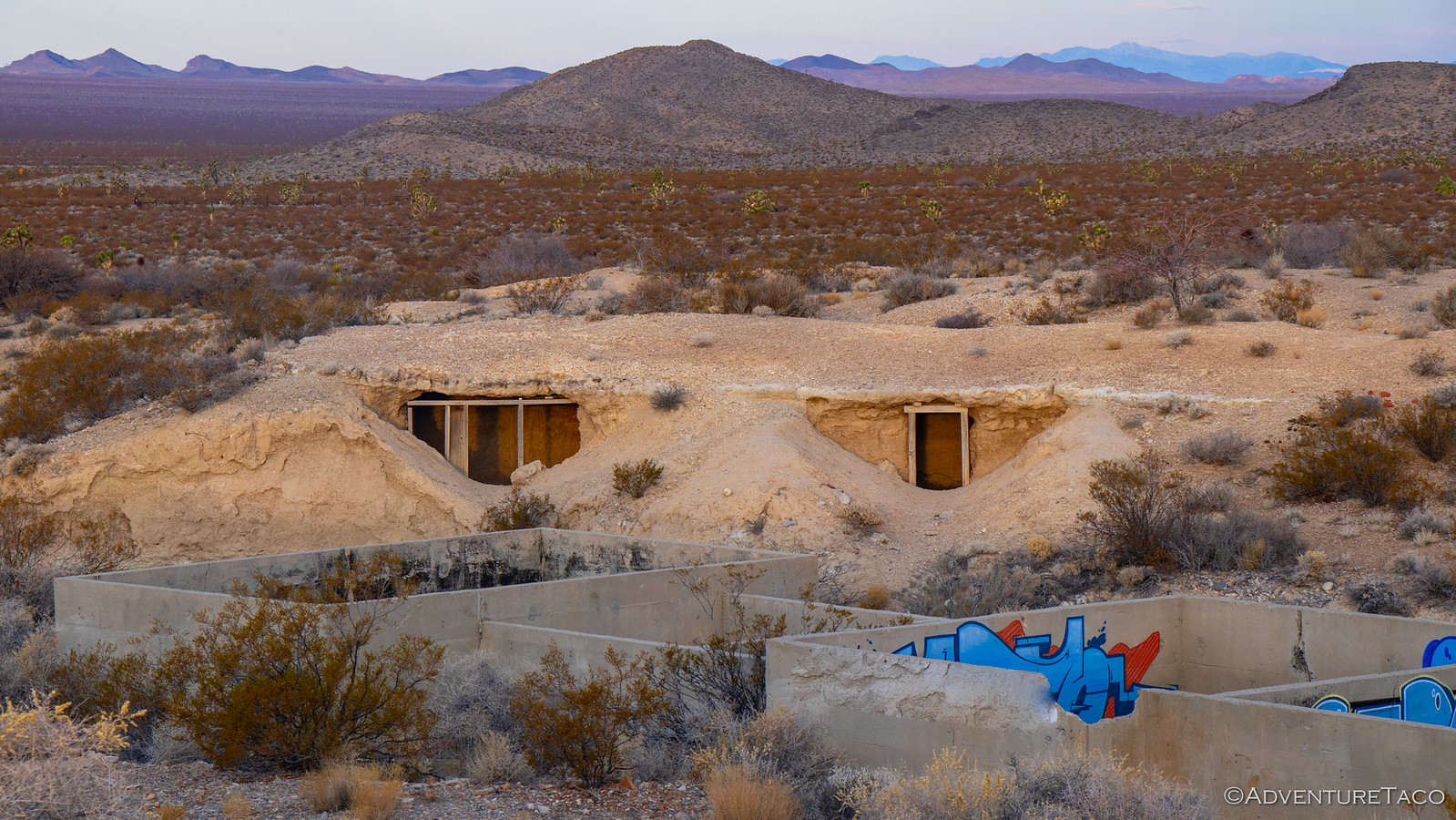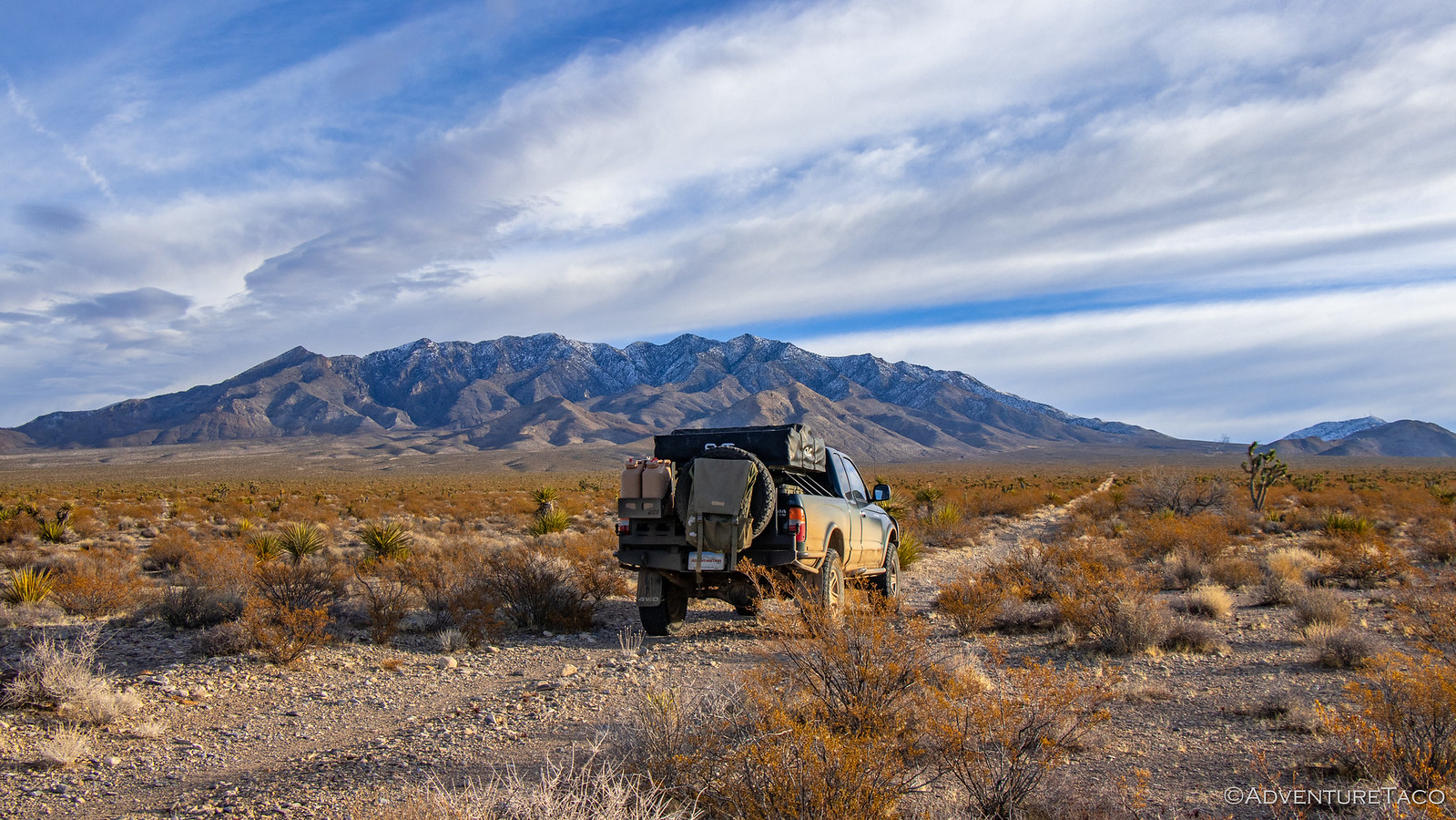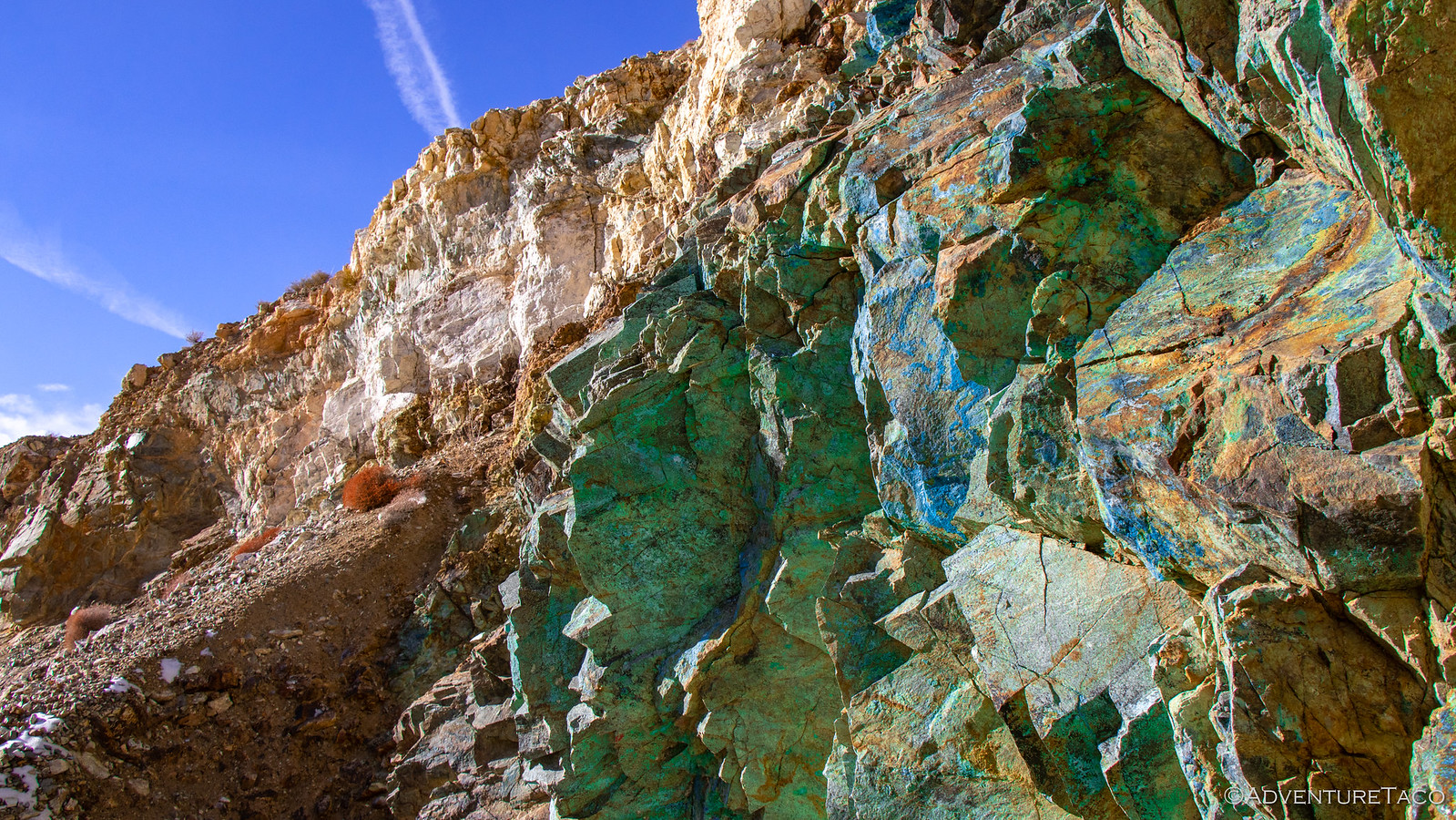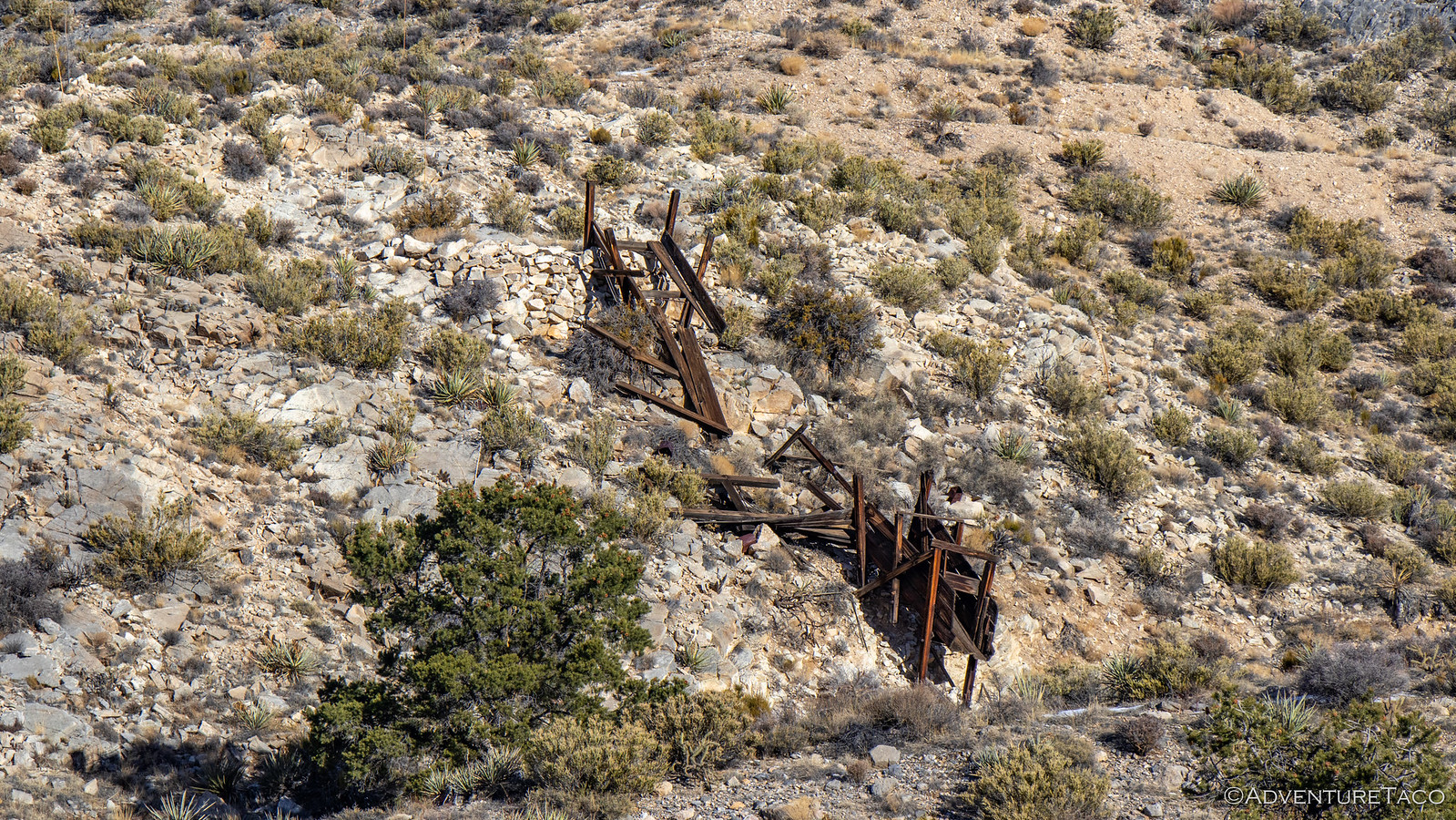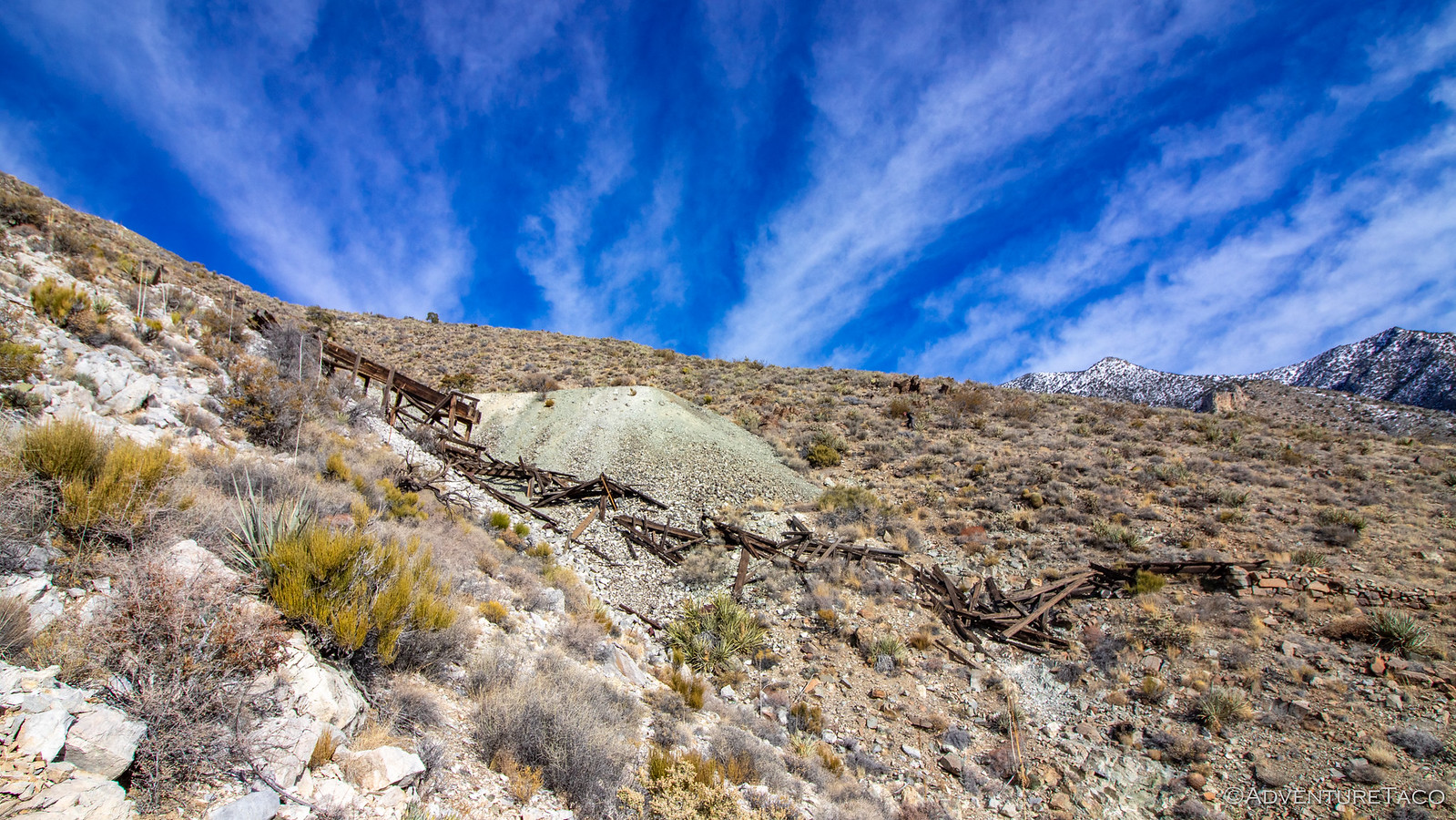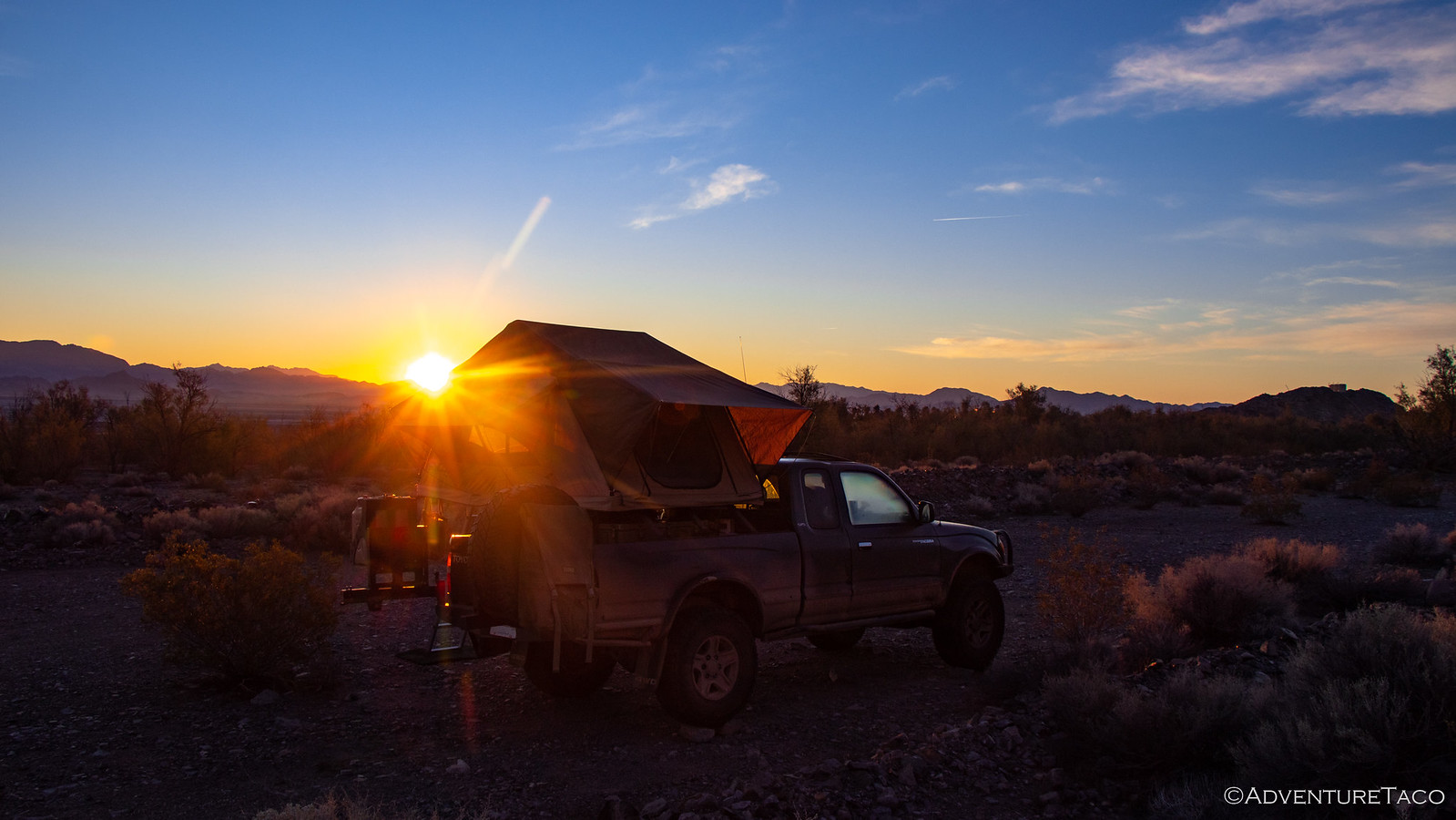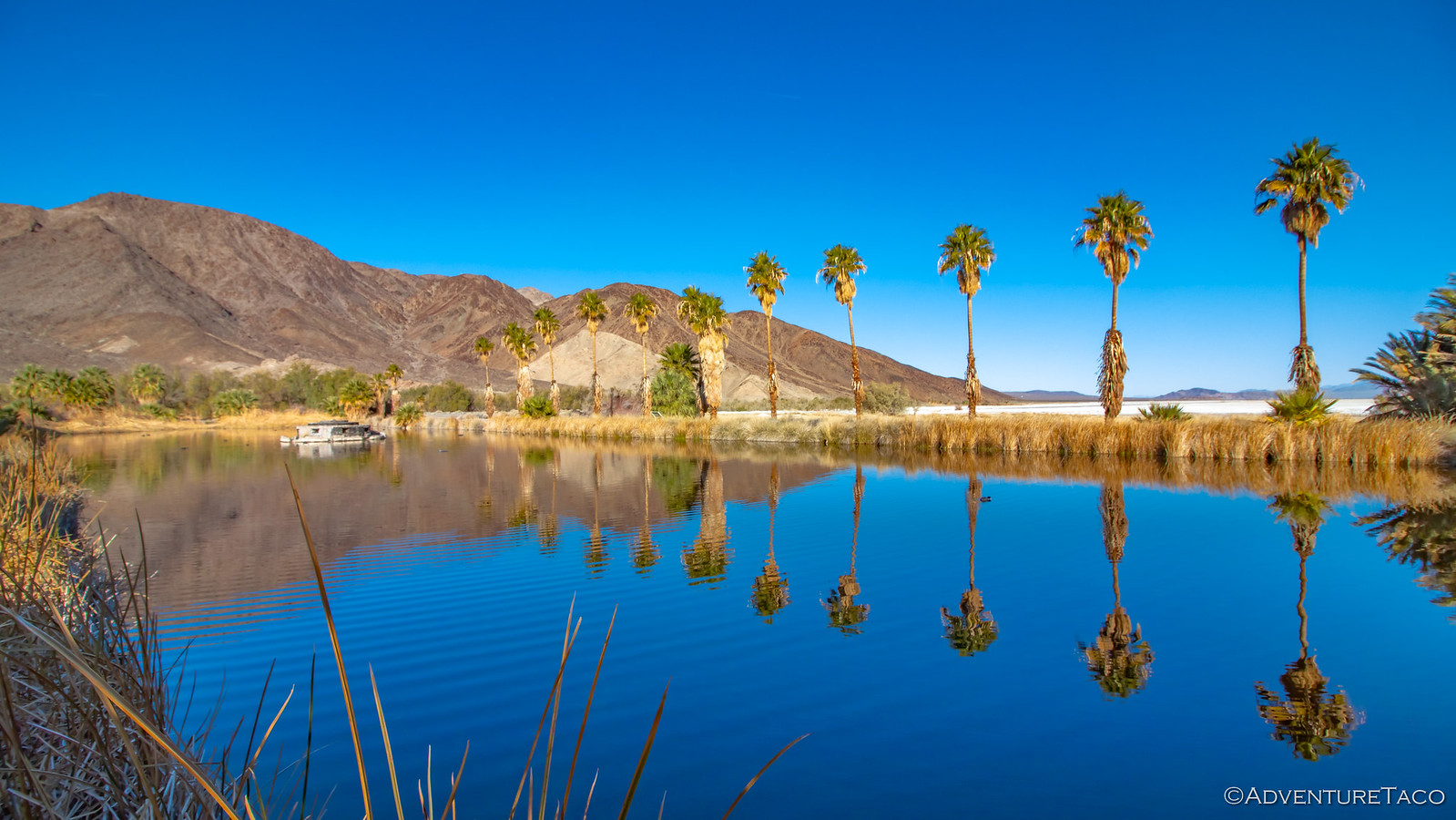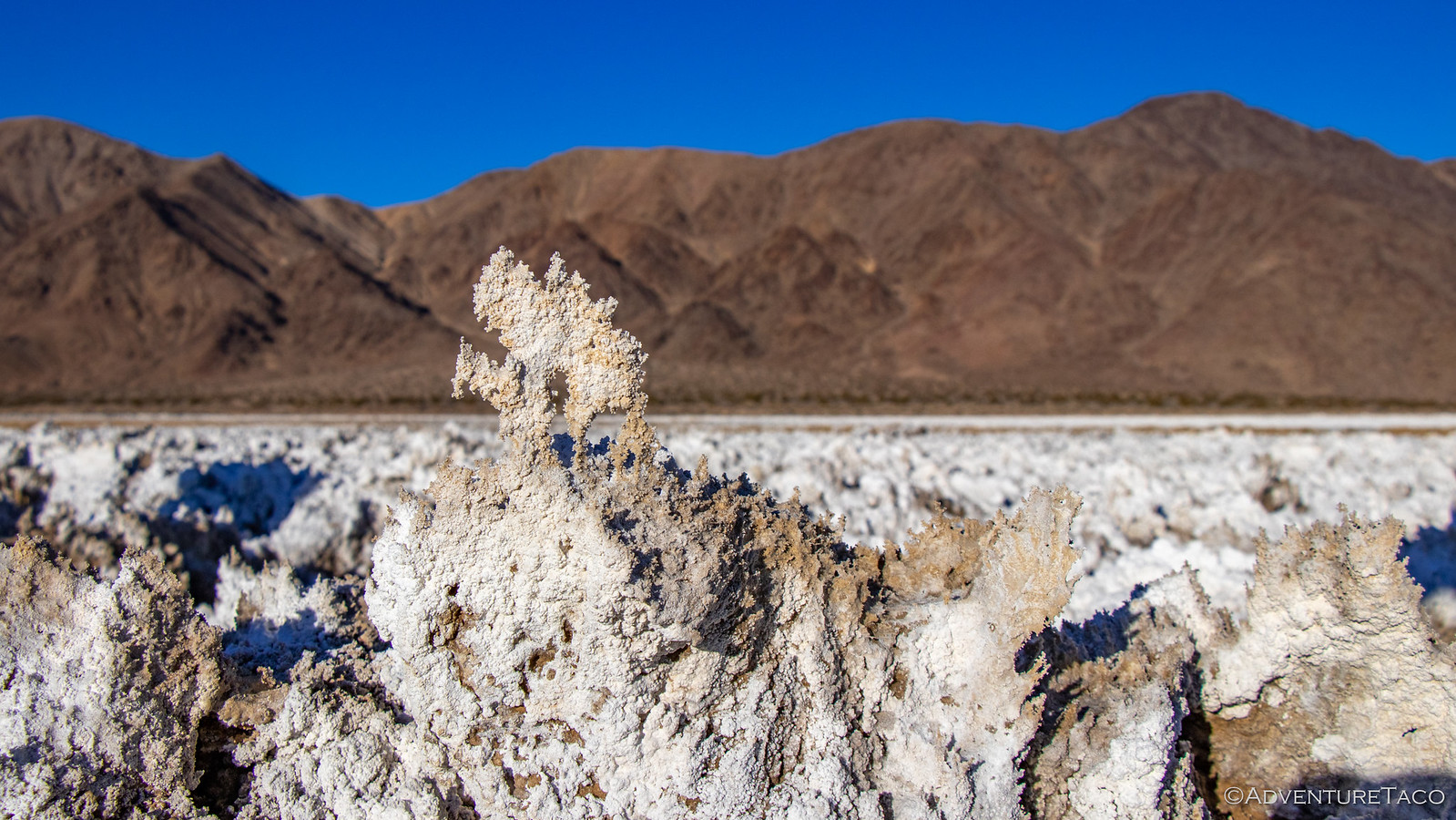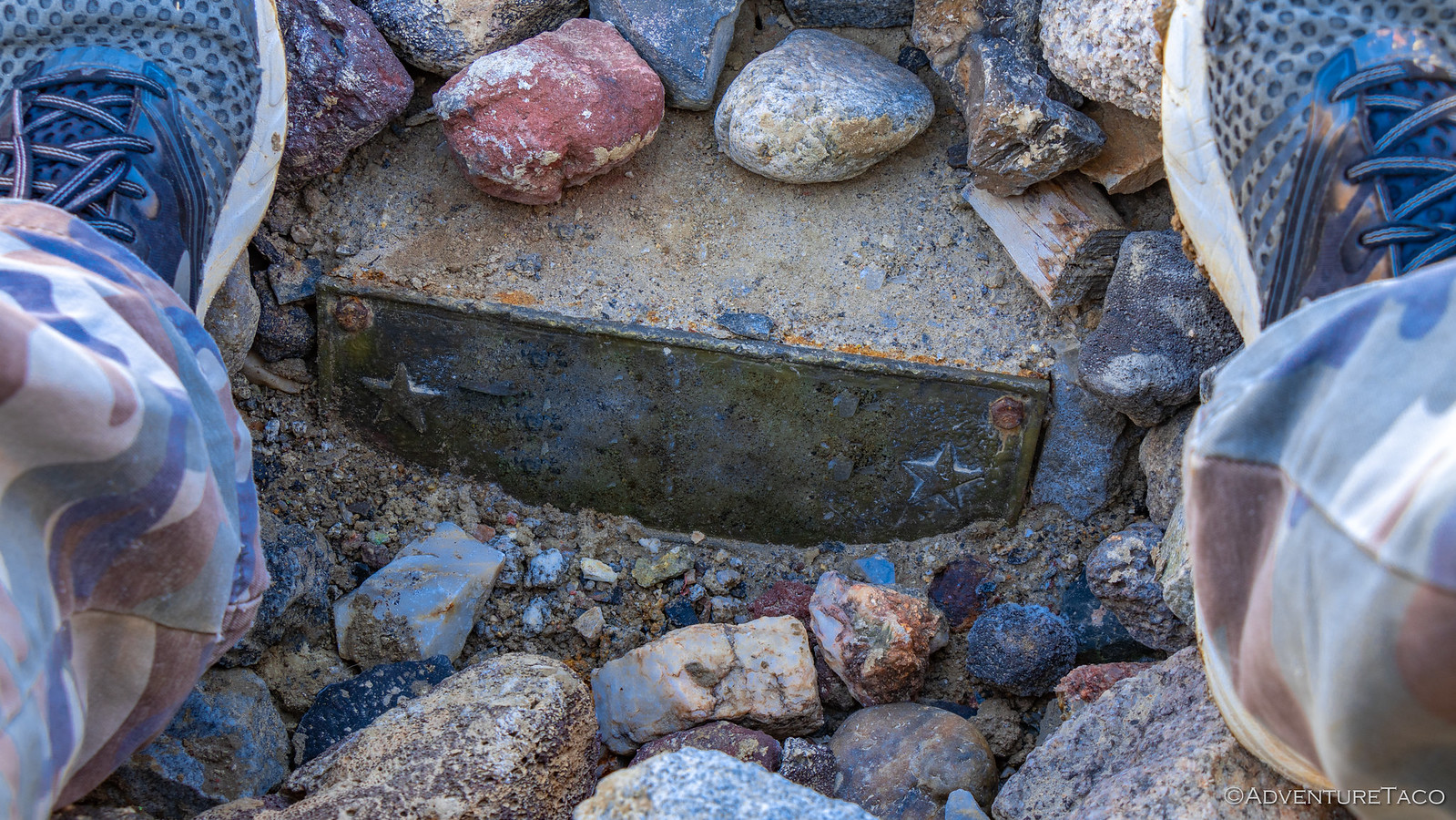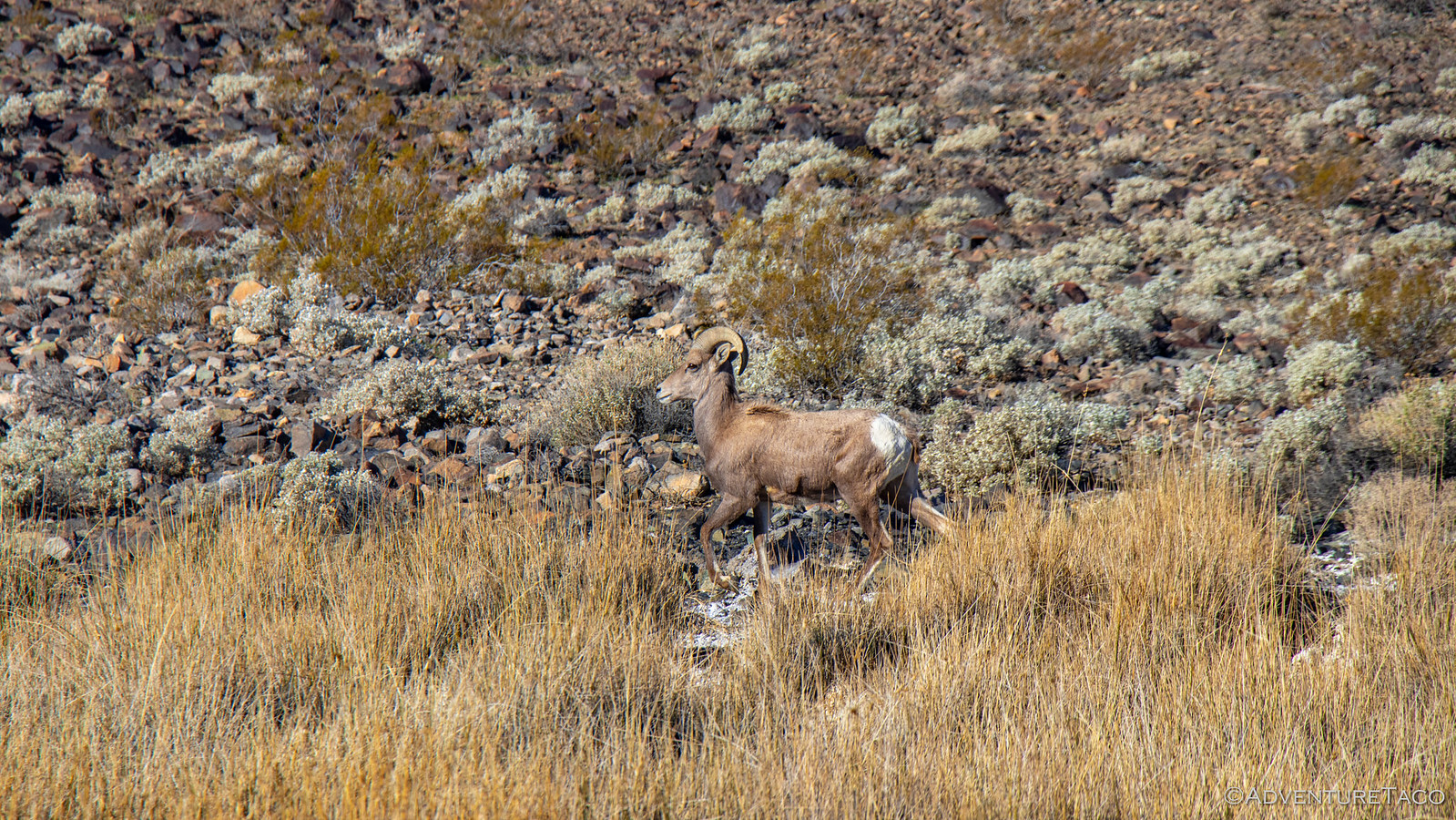turbodb
Well-known member
Mojave Redemption #4 - Hidden Mines and Highway Robbery
Part of the Mojave Redemption (Dec 2019) trip.
Our location at the Kelso Dunes was the first where I thought there'd be a chance of a nice sunrise, so I'd set my alarm for 6:00am to try and catch the orange on the horizon. It was of course quite chilly at 6:00am, and so I had the bright idea to just take a photo with my phone out the door of the tent, rather than climbing down the ladder to fetch the Canon 80D - that I shoot with - from the truck.
Well, the photo came out so poorly - compared to what I'm now used to - that I'm not even going to share it. But hey, I stayed warm and got another hour of sleep! ?
As the sun crested the horizon - or at least our horizon for the morning - we did finally pull ourselves out of bed, happy to see that the breeze we'd had during the night was successful in keeping the tent totally dry. And waking up to the illuminated dunes and Devil's Playground wasn't anything to complain about!
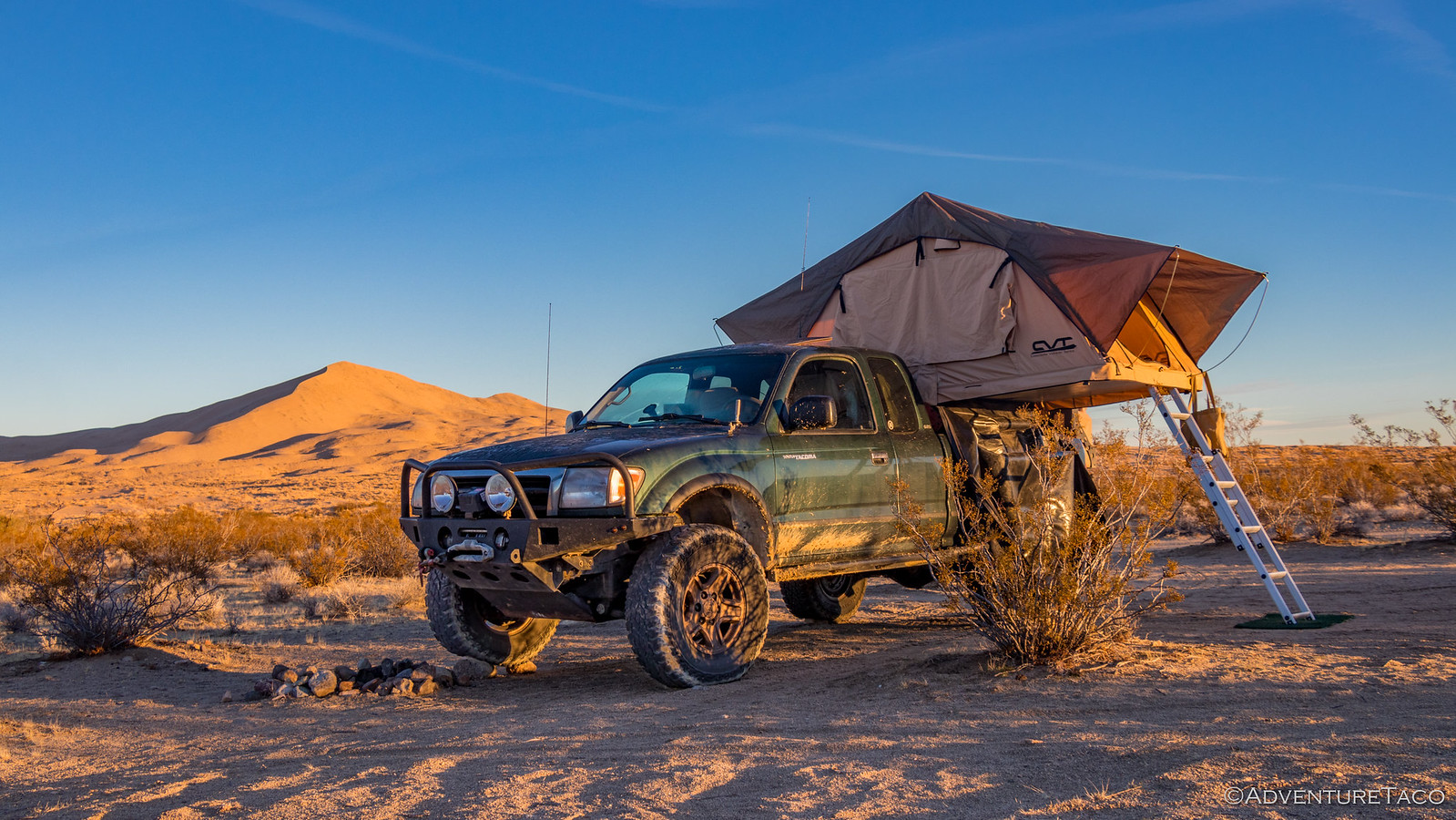
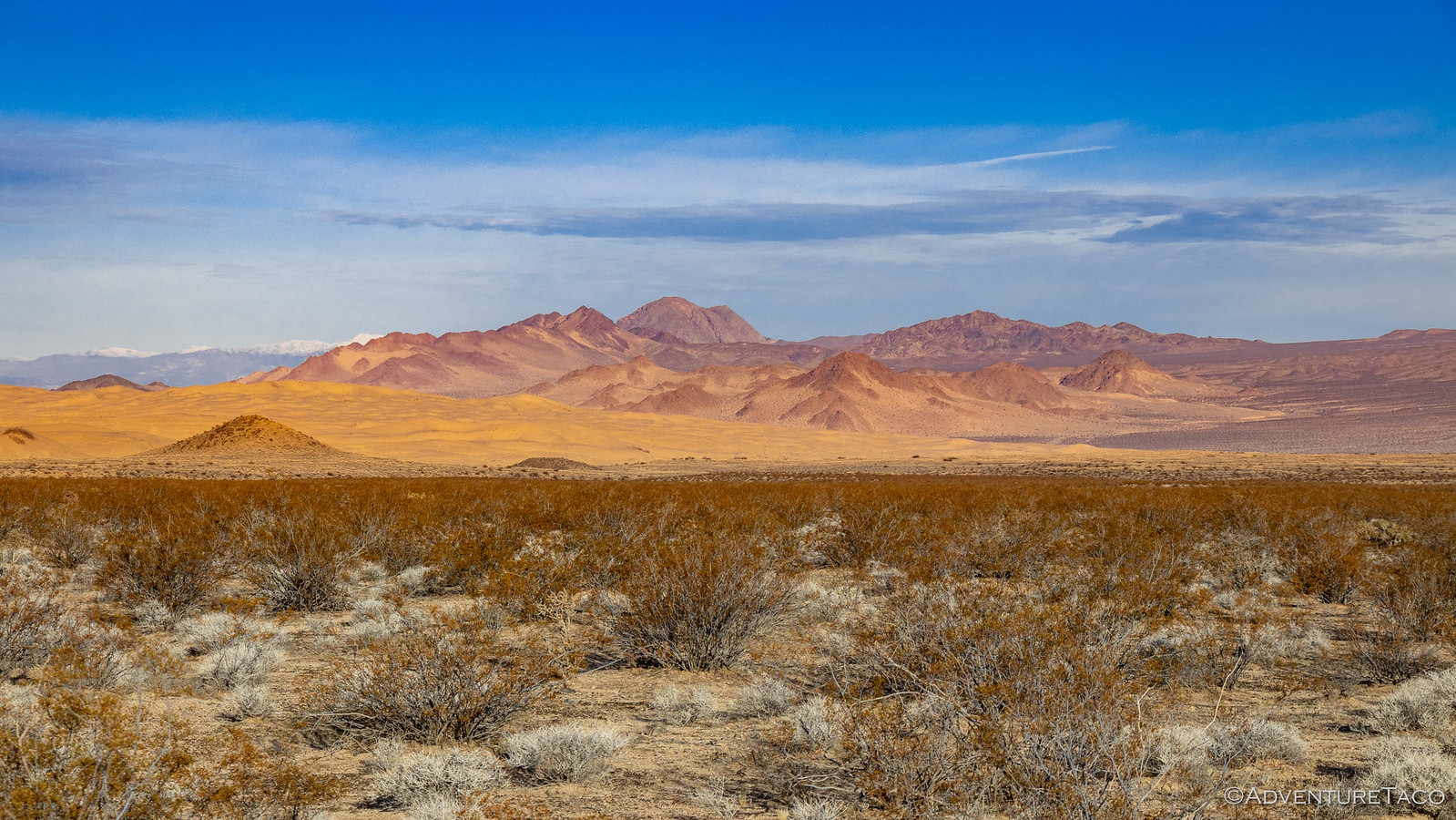
Not having to wait for anything to dry out, we made quick work of breakfast and camp tear-down, and we were soon on the road and headed south. Our goal for the day was twofold - visit cool places, and stay out of the snow (if possible). Our first cool place - Hidden Hill, home to the Hidden Hill Mine and Golden Queen Mine - was between 3300' - 3950', so we knew it'd be a good indicator for the remainder of the day, where we'd be spending some time between 4000' - 4700'.
Hidden Hill Road is accessible from Kelbaker road, just south of Granite Pass, which afforded us an amazing view of the Granite Mountains, still very snow-covered from the storm a few days earlier. Even with a full day in front of us, we spent a bit of time soaking in the views here - first in front of us, and then in our mirrors as we made our way east.

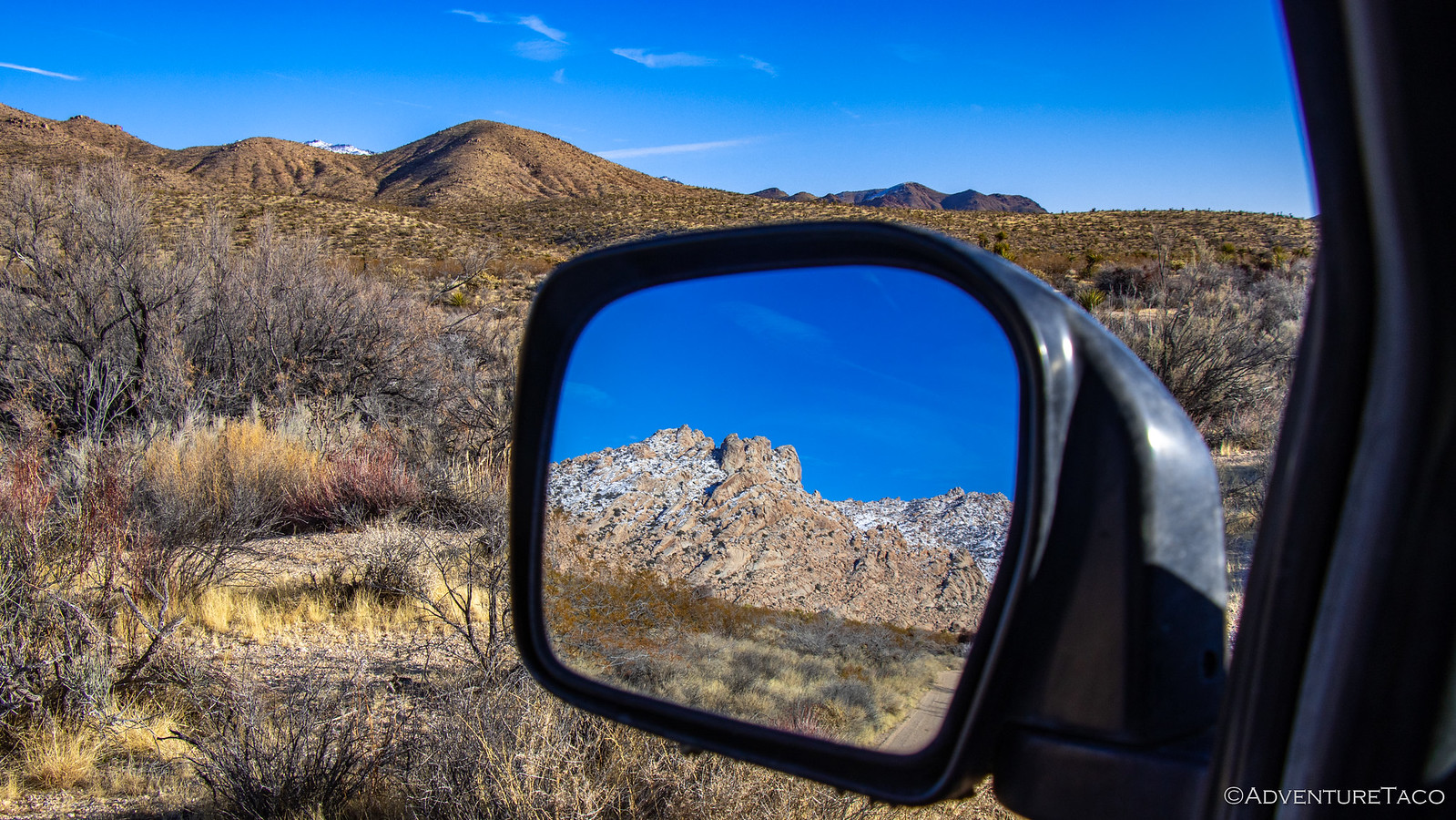
It's probably worth mentioning here - and maybe a few other places in this series of stories - that the roads in the Mojave National Preserve are generally in amazingly good condition. As I recall, we were still aired up at this point, and only aired down a couple times throughout the entire trip as we encountered individually rough roads, or wanted to increase our speed. At any rate, heading east, we had a few miles to travel towards the south end of the Providence Mountains before we came to an old windmill that marked the entrance to the Hidden Hill area.
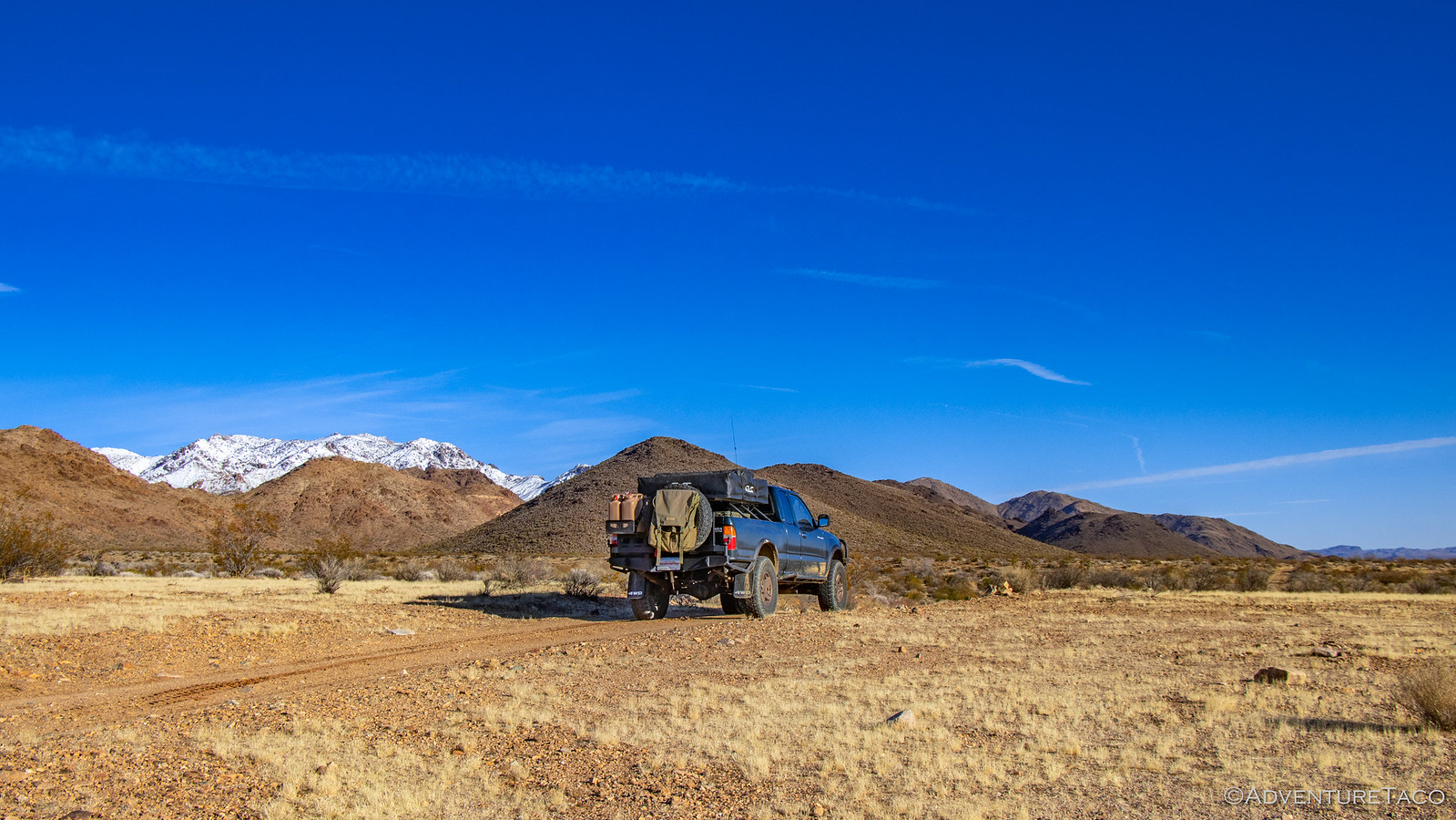

The first mine we came to - a quarter mile or so further up the road - was the Golden Queen Mine. With one of the best-preserved mills in the area, it allowed us to see the path through witch ore flowed better than any other we'd encounter on the trip. Ore was loaded into the wooden hopper at the top of the mill and then fed down into a crusher (which is now gone). After being crushed, it would enter the triangular funnel to be fed into a horizontal cone-shaped ball mill at the next level of concrete foundation. After being further pulverized, it would drop into the final level of partitioned concrete vats, where the gold was separated from the rest of the ore using cyanide.
And, next to the mill are two large mine shafts and their associated tailings piles - all of it dating from the early 1900s.
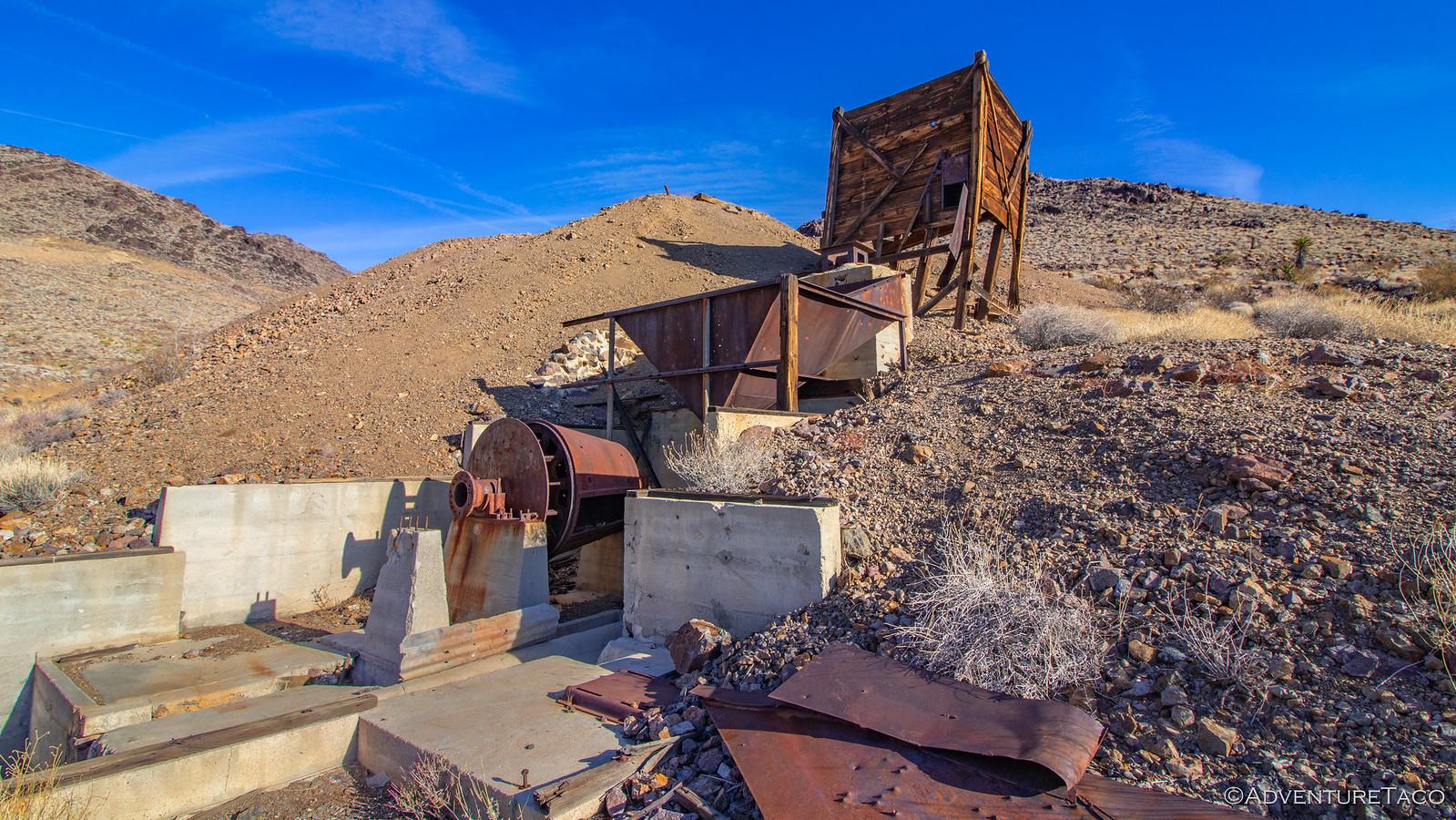

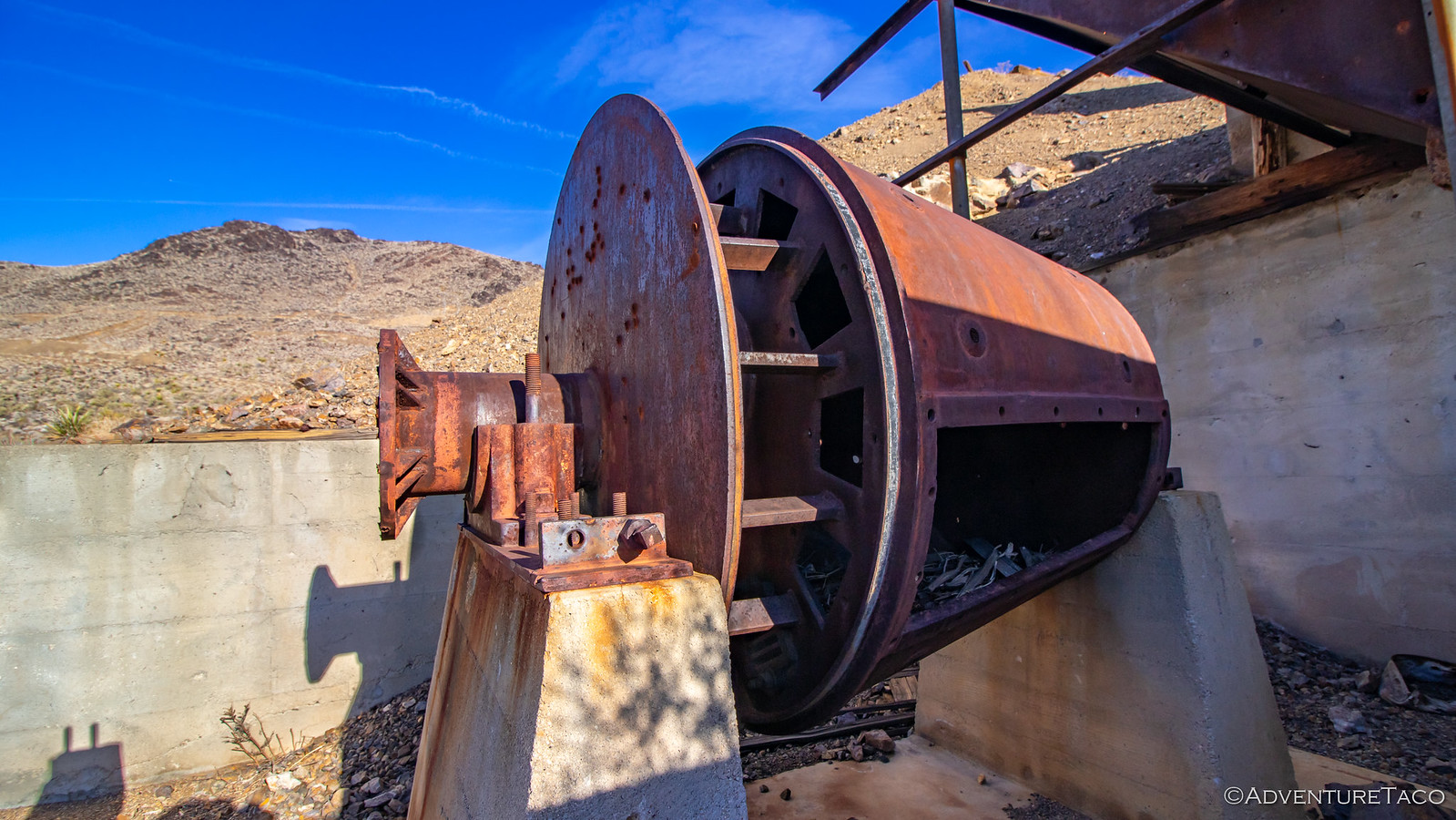


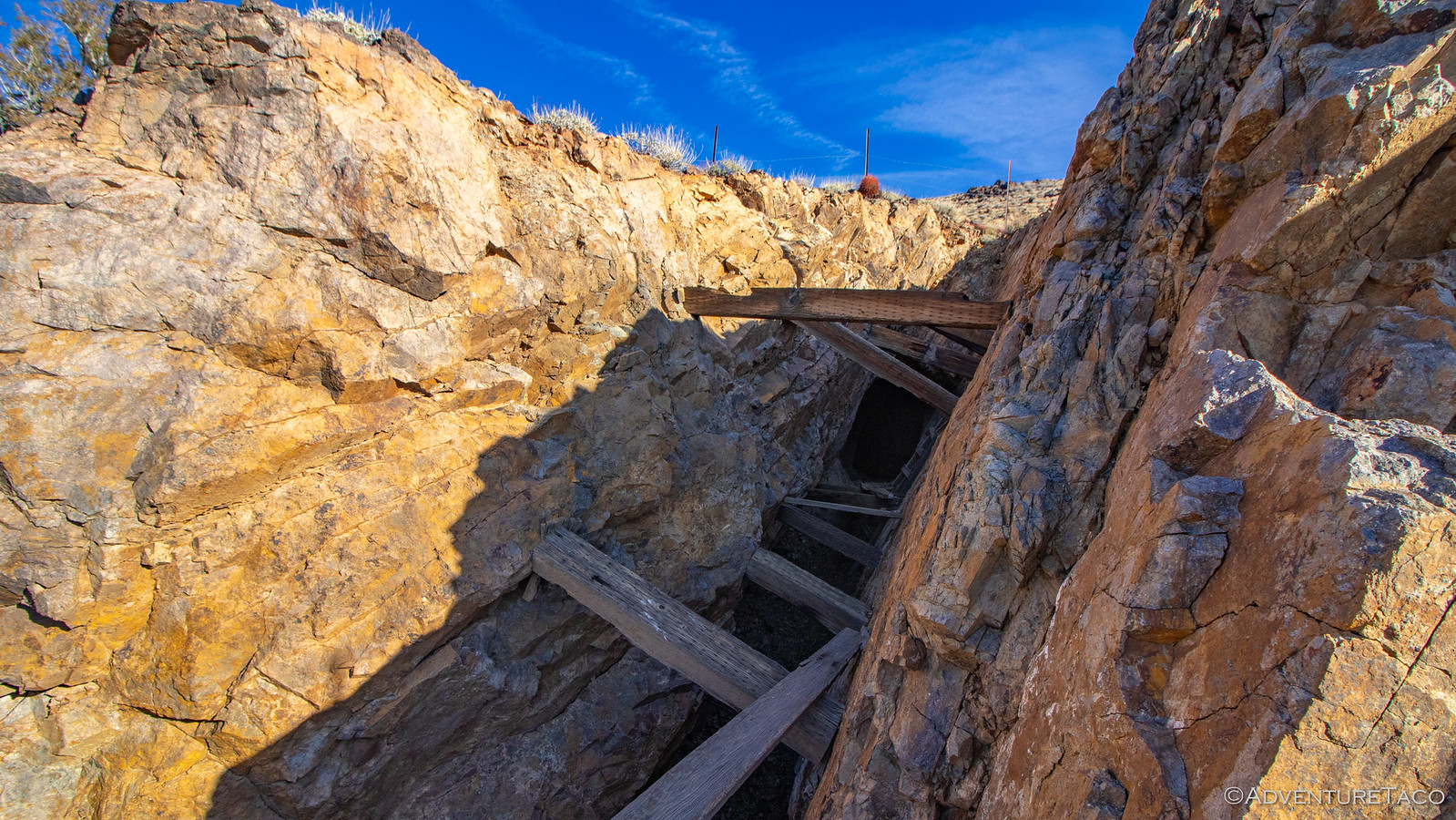
After exploring the Golden Queen mine and its shafts for a good half hour or so, it was time to check out the rest of what Hidden Hill had to offer - namely, the workings of the similarly named Hidden Hill Mine. Worked around the same time as the Golden Queen, the hiking trail starts from the Golden Queen's mill and works its way up the face of Hidden Hill to the north. This hiking trail was at one time a mining road, and while it still seemed like it could be drivable, there were two metal fence posts placed to block the way, which should be respected. Regardless, the hike passes by so many mine workings that walking is likely as fast as driving, so we were happy to set out on foot, the barrel cactus and yucca covering the hillside in a beautiful display of color.
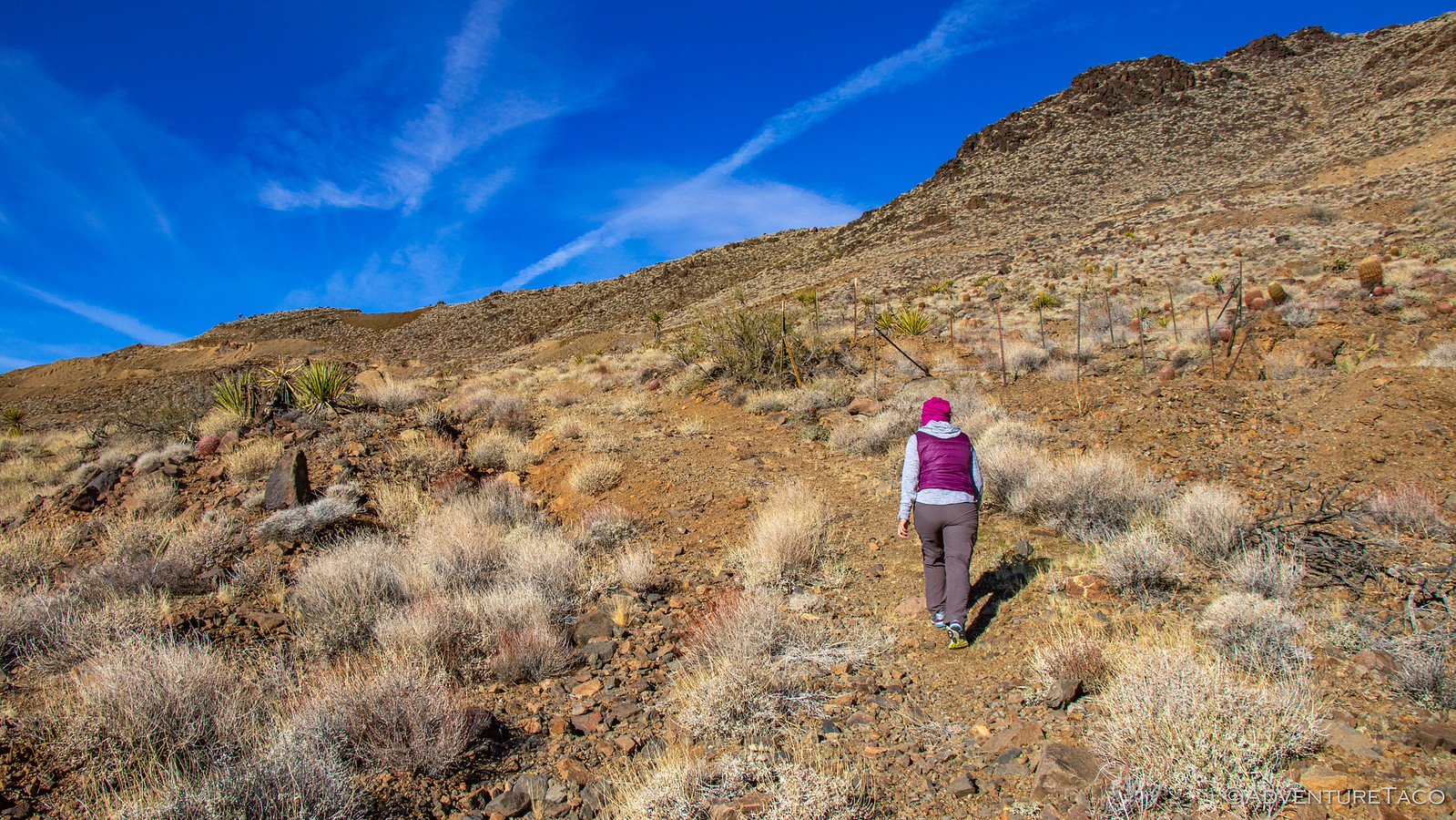

It seemed that every 50 feet or so we were stopping to investigate another working. Some were deep mine shafts, others were simple diggings. Still others appeared to be road cuts or ore chutes that material would be sent down in order to reach the mill. Wandering from working to working, we thoroughly enjoyed ourselves - this set of mines being one of our favorite even after visiting many more over the remainder of the trip.
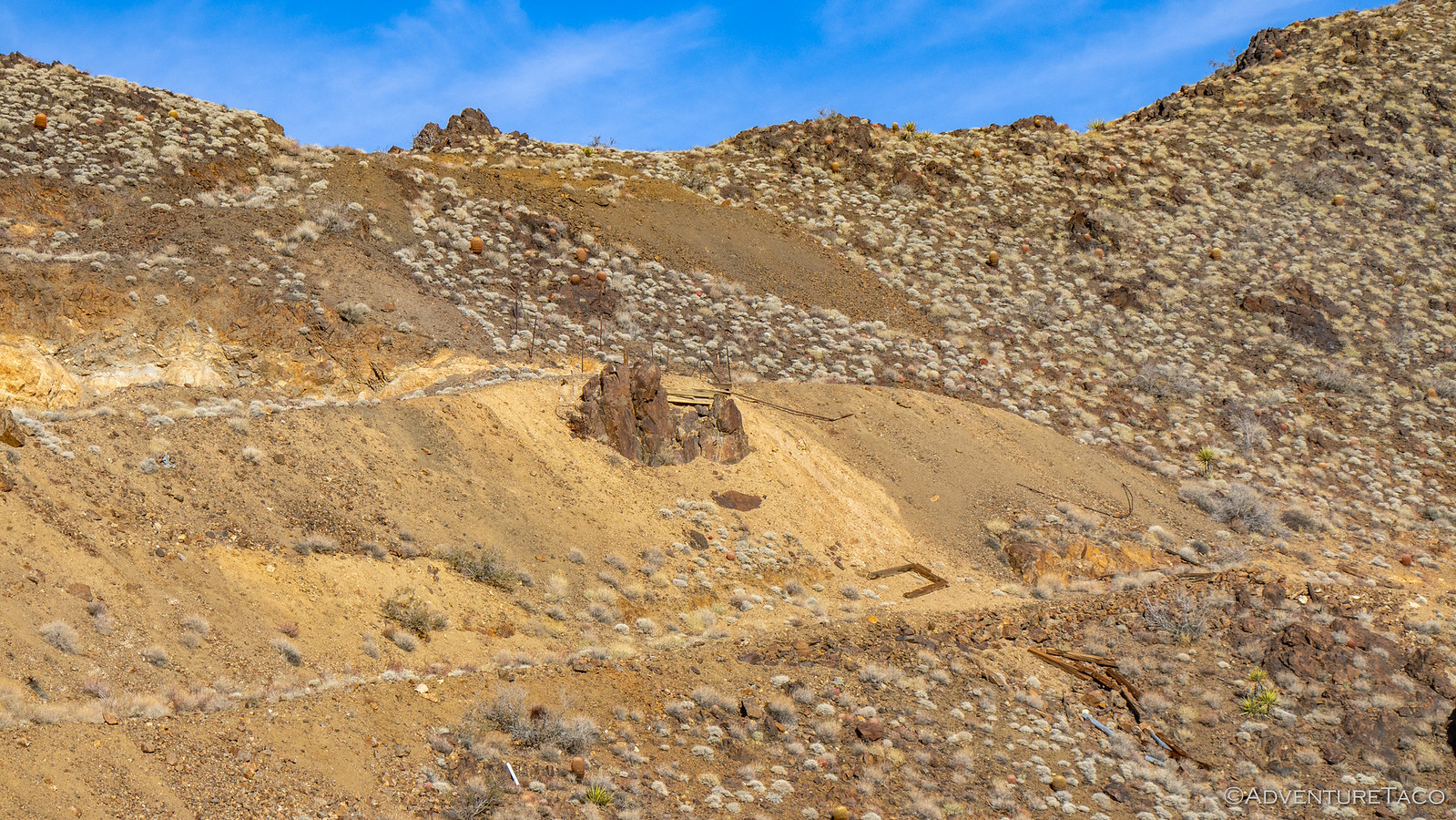
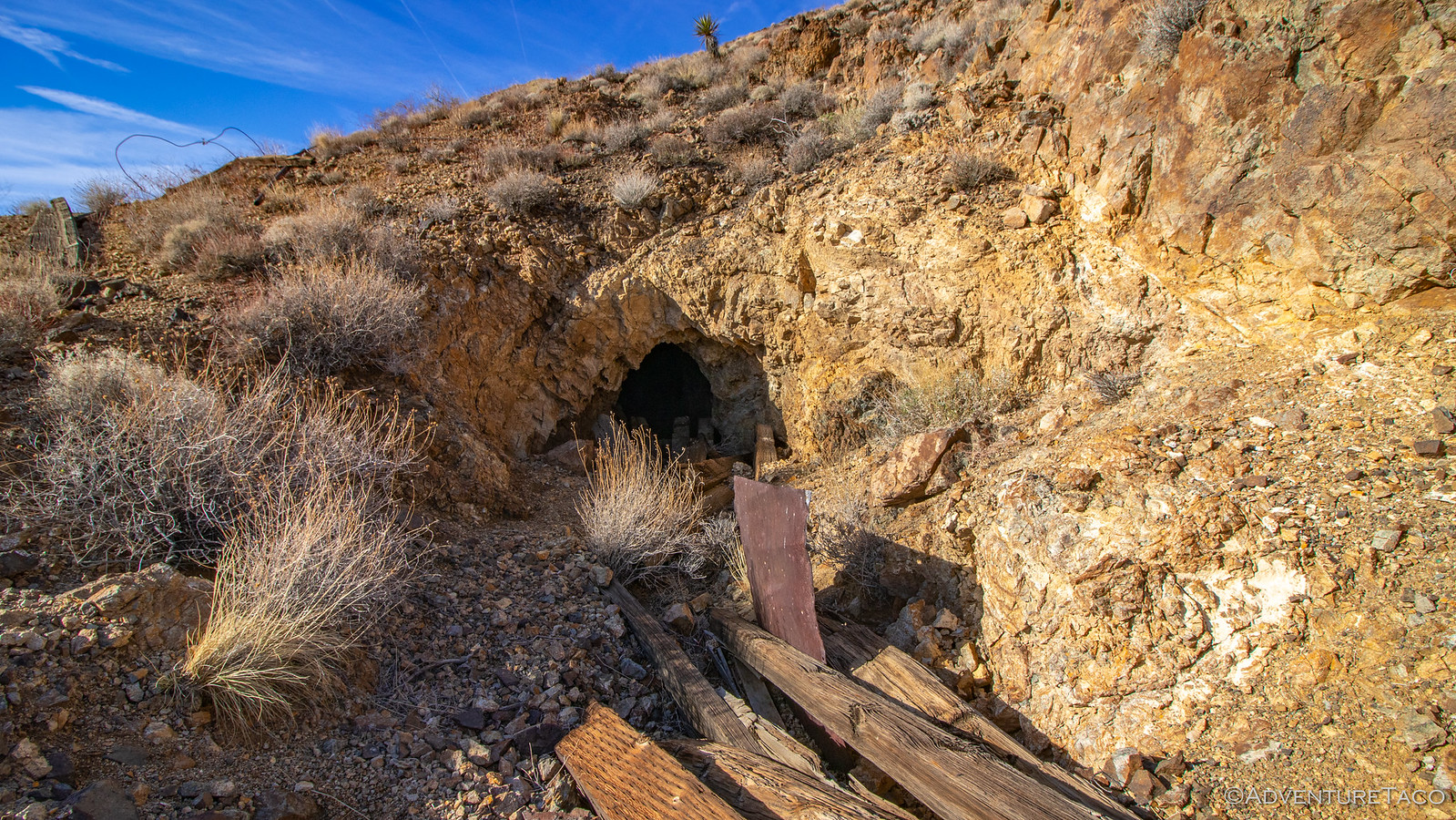


Having completed our investigation, we made our way back down to the Tacoma - itself framed by views of the Clipper Valley to the south. And, as though we hadn't seen enough already, we discovered a new shaft on our way down, ripe for the exploring.
Don't miss the rest of the story, and all the remaining photos that don't fit here (due to max post size). Hopefully that can change in the future, but until then...
.
Part of the Mojave Redemption (Dec 2019) trip.
Our location at the Kelso Dunes was the first where I thought there'd be a chance of a nice sunrise, so I'd set my alarm for 6:00am to try and catch the orange on the horizon. It was of course quite chilly at 6:00am, and so I had the bright idea to just take a photo with my phone out the door of the tent, rather than climbing down the ladder to fetch the Canon 80D - that I shoot with - from the truck.
Well, the photo came out so poorly - compared to what I'm now used to - that I'm not even going to share it. But hey, I stayed warm and got another hour of sleep! ?
As the sun crested the horizon - or at least our horizon for the morning - we did finally pull ourselves out of bed, happy to see that the breeze we'd had during the night was successful in keeping the tent totally dry. And waking up to the illuminated dunes and Devil's Playground wasn't anything to complain about!


Not having to wait for anything to dry out, we made quick work of breakfast and camp tear-down, and we were soon on the road and headed south. Our goal for the day was twofold - visit cool places, and stay out of the snow (if possible). Our first cool place - Hidden Hill, home to the Hidden Hill Mine and Golden Queen Mine - was between 3300' - 3950', so we knew it'd be a good indicator for the remainder of the day, where we'd be spending some time between 4000' - 4700'.
Hidden Hill Road is accessible from Kelbaker road, just south of Granite Pass, which afforded us an amazing view of the Granite Mountains, still very snow-covered from the storm a few days earlier. Even with a full day in front of us, we spent a bit of time soaking in the views here - first in front of us, and then in our mirrors as we made our way east.


It's probably worth mentioning here - and maybe a few other places in this series of stories - that the roads in the Mojave National Preserve are generally in amazingly good condition. As I recall, we were still aired up at this point, and only aired down a couple times throughout the entire trip as we encountered individually rough roads, or wanted to increase our speed. At any rate, heading east, we had a few miles to travel towards the south end of the Providence Mountains before we came to an old windmill that marked the entrance to the Hidden Hill area.


The first mine we came to - a quarter mile or so further up the road - was the Golden Queen Mine. With one of the best-preserved mills in the area, it allowed us to see the path through witch ore flowed better than any other we'd encounter on the trip. Ore was loaded into the wooden hopper at the top of the mill and then fed down into a crusher (which is now gone). After being crushed, it would enter the triangular funnel to be fed into a horizontal cone-shaped ball mill at the next level of concrete foundation. After being further pulverized, it would drop into the final level of partitioned concrete vats, where the gold was separated from the rest of the ore using cyanide.
And, next to the mill are two large mine shafts and their associated tailings piles - all of it dating from the early 1900s.


A view of the concrete foundations and vats, where cyanide was used to separate gold from the ore.

An old ball mill.

The Golden Queen's main mine shaft.


Looks legit. Safety was clearly the first priority here. ?
After exploring the Golden Queen mine and its shafts for a good half hour or so, it was time to check out the rest of what Hidden Hill had to offer - namely, the workings of the similarly named Hidden Hill Mine. Worked around the same time as the Golden Queen, the hiking trail starts from the Golden Queen's mill and works its way up the face of Hidden Hill to the north. This hiking trail was at one time a mining road, and while it still seemed like it could be drivable, there were two metal fence posts placed to block the way, which should be respected. Regardless, the hike passes by so many mine workings that walking is likely as fast as driving, so we were happy to set out on foot, the barrel cactus and yucca covering the hillside in a beautiful display of color.


It seemed that every 50 feet or so we were stopping to investigate another working. Some were deep mine shafts, others were simple diggings. Still others appeared to be road cuts or ore chutes that material would be sent down in order to reach the mill. Wandering from working to working, we thoroughly enjoyed ourselves - this set of mines being one of our favorite even after visiting many more over the remainder of the trip.

Remains of mine shaft reinforcements, now scattered down the slopes of Hidden Hill.

An old mine shaft, ready to be investigated!

The view out of the old mine shaft, @mrs.turbodb making sure I'm OK.

Inside the same old mine shaft - the intricate tunnel systems evident even in the first 50' of the shaft.
Having completed our investigation, we made our way back down to the Tacoma - itself framed by views of the Clipper Valley to the south. And, as though we hadn't seen enough already, we discovered a new shaft on our way down, ripe for the exploring.
Don't miss the rest of the story, and all the remaining photos that don't fit here (due to max post size). Hopefully that can change in the future, but until then...
Keep reading the rest here
Mojave Redemption #4 - Hidden Mines and Highway Robbery
Mojave Redemption #4 - Hidden Mines and Highway Robbery
.

